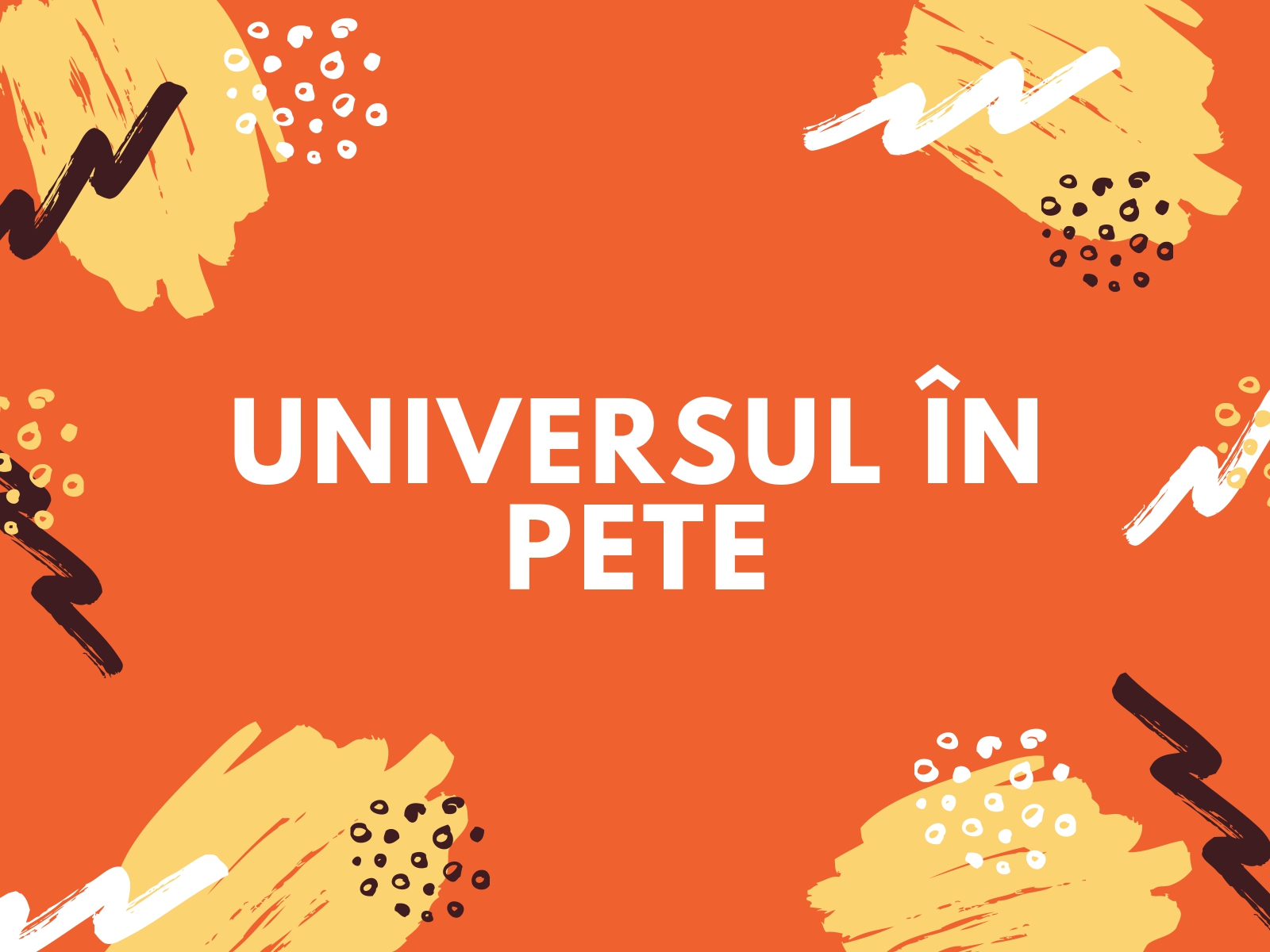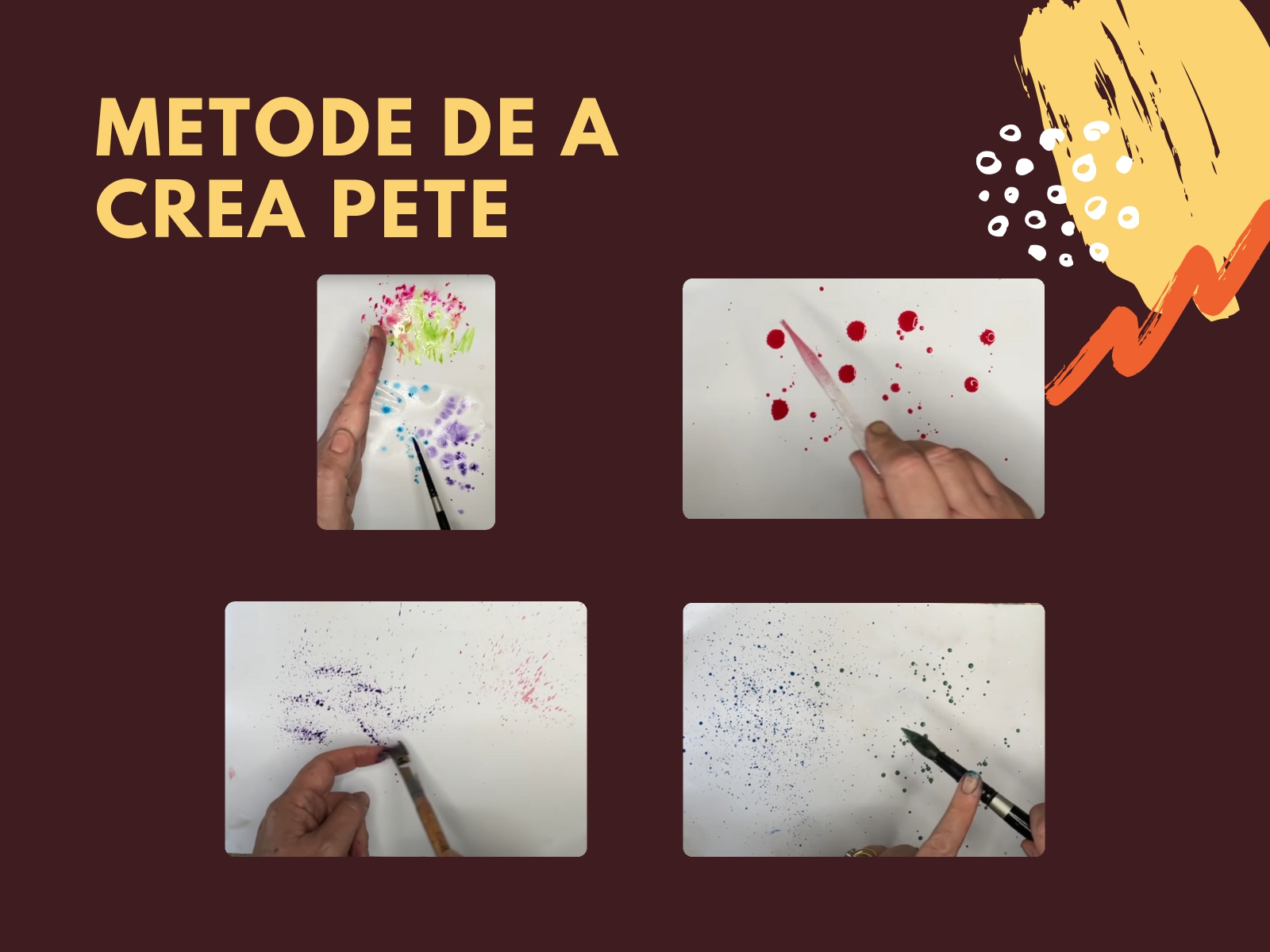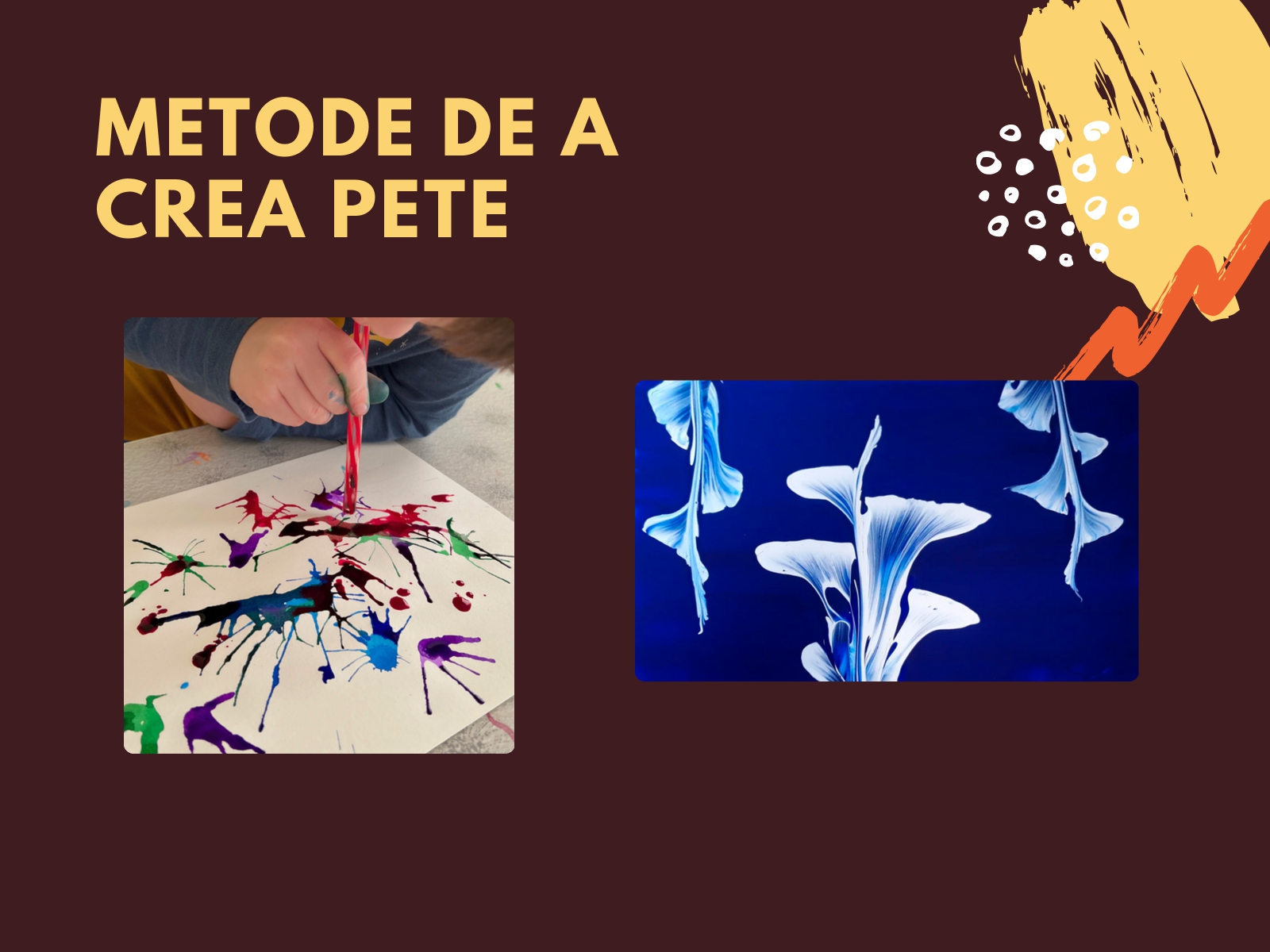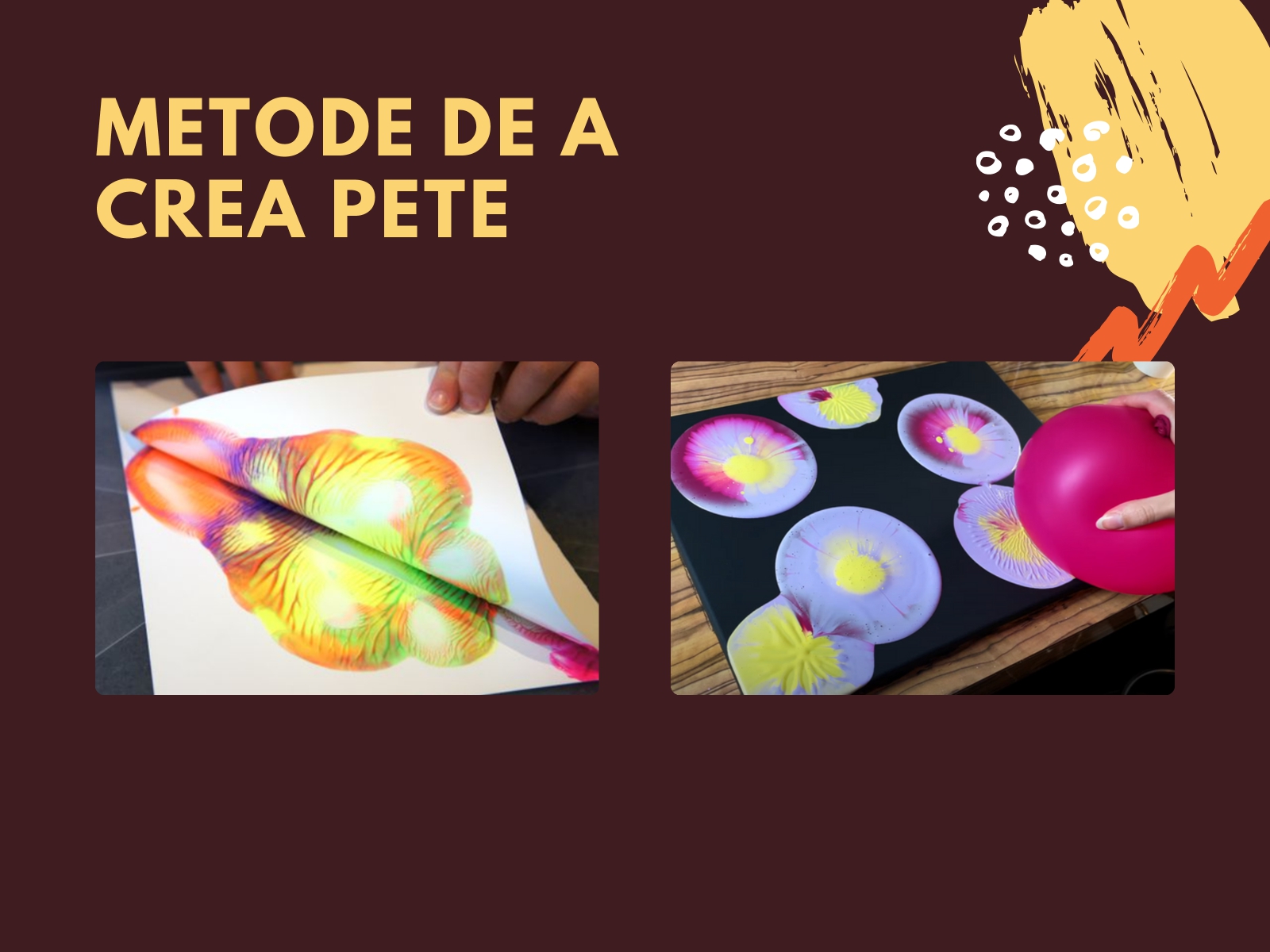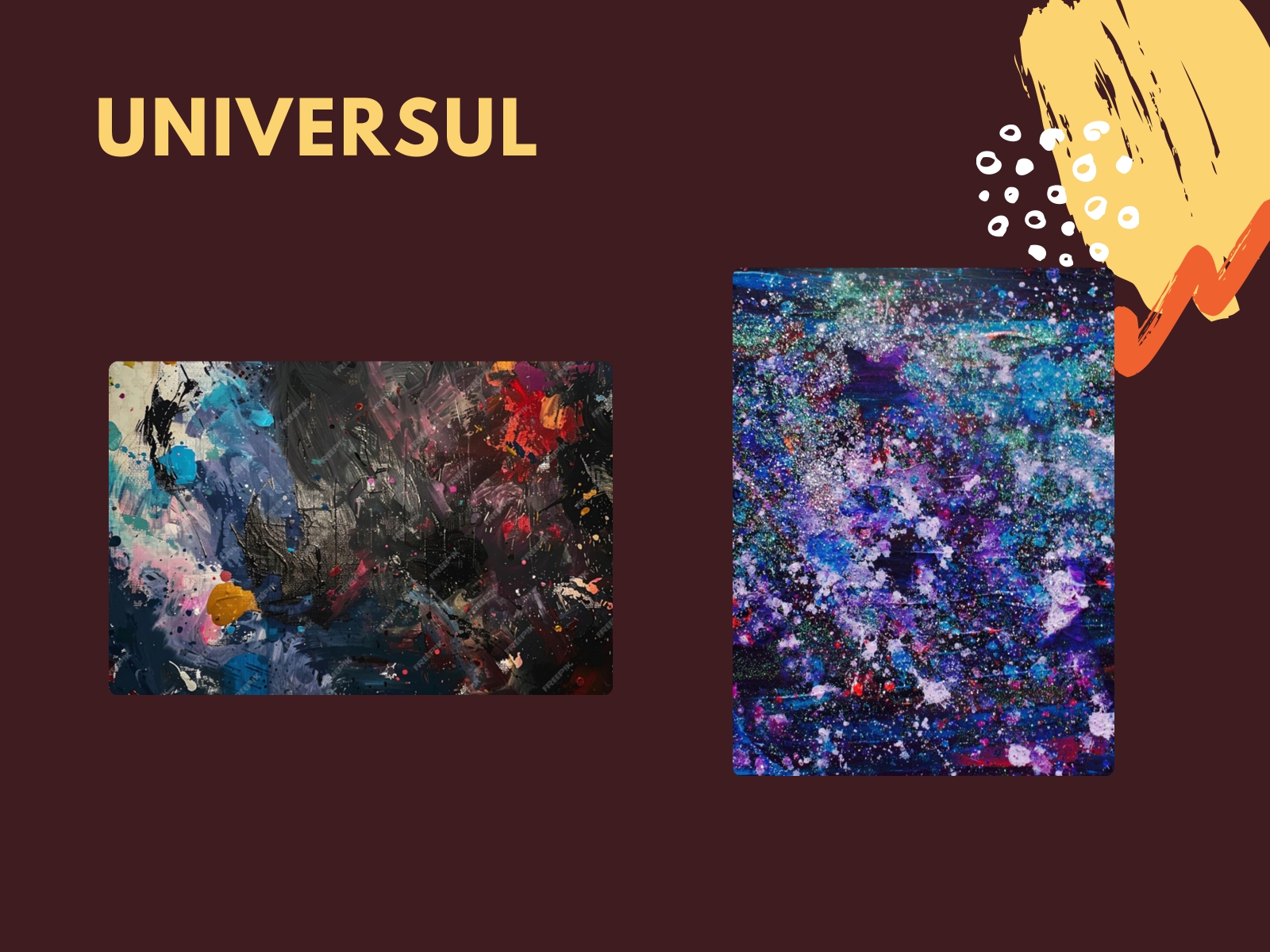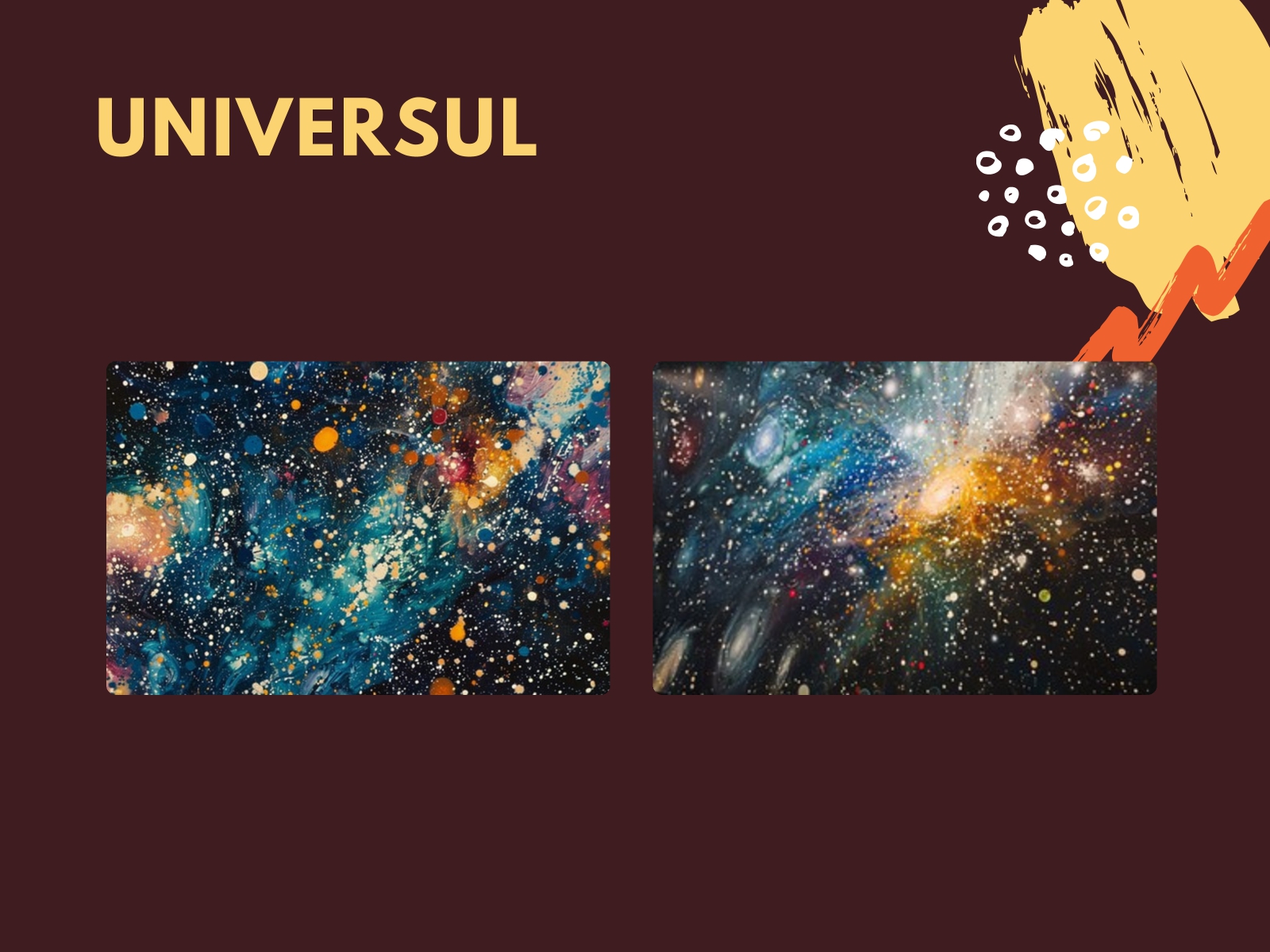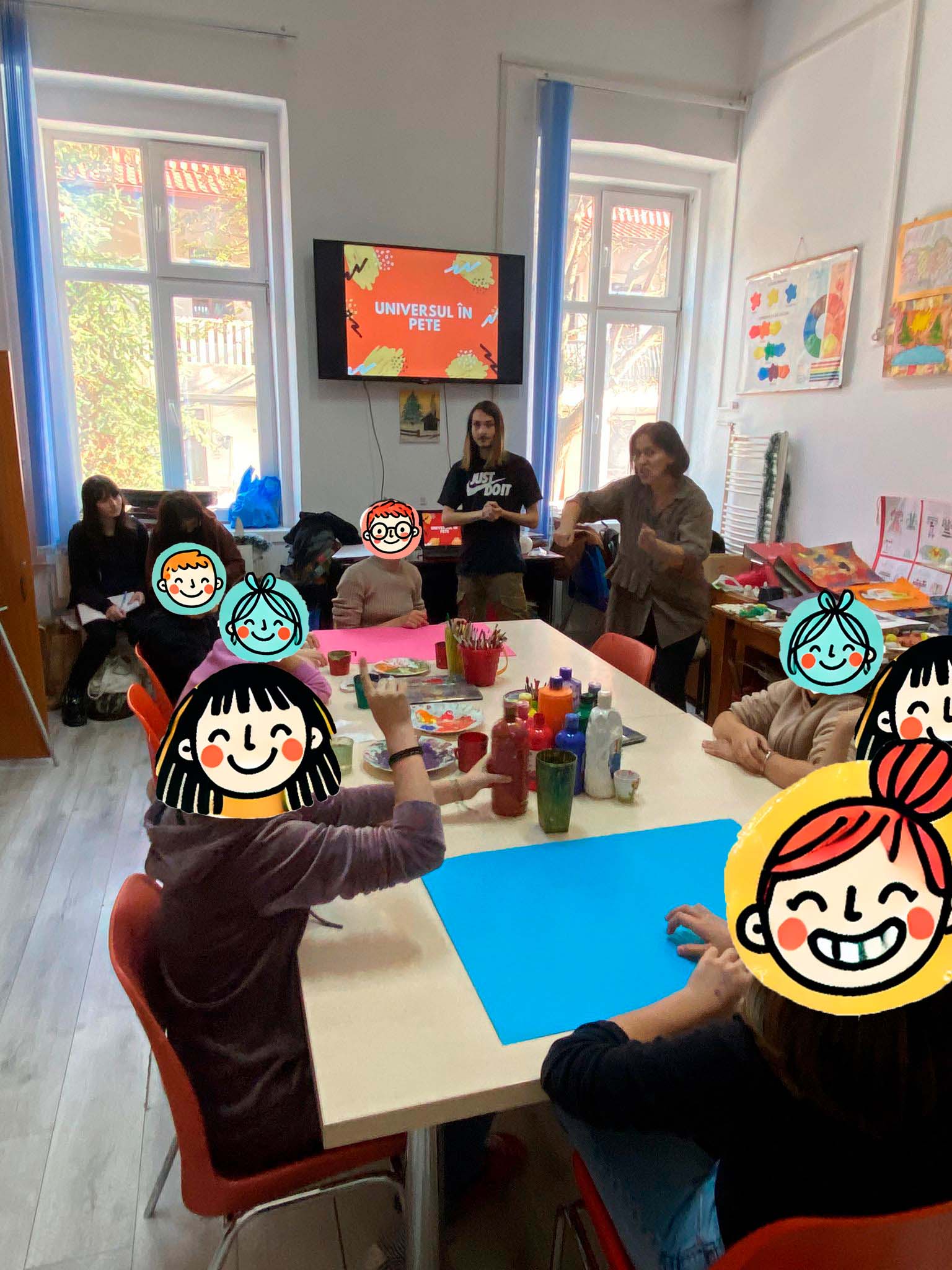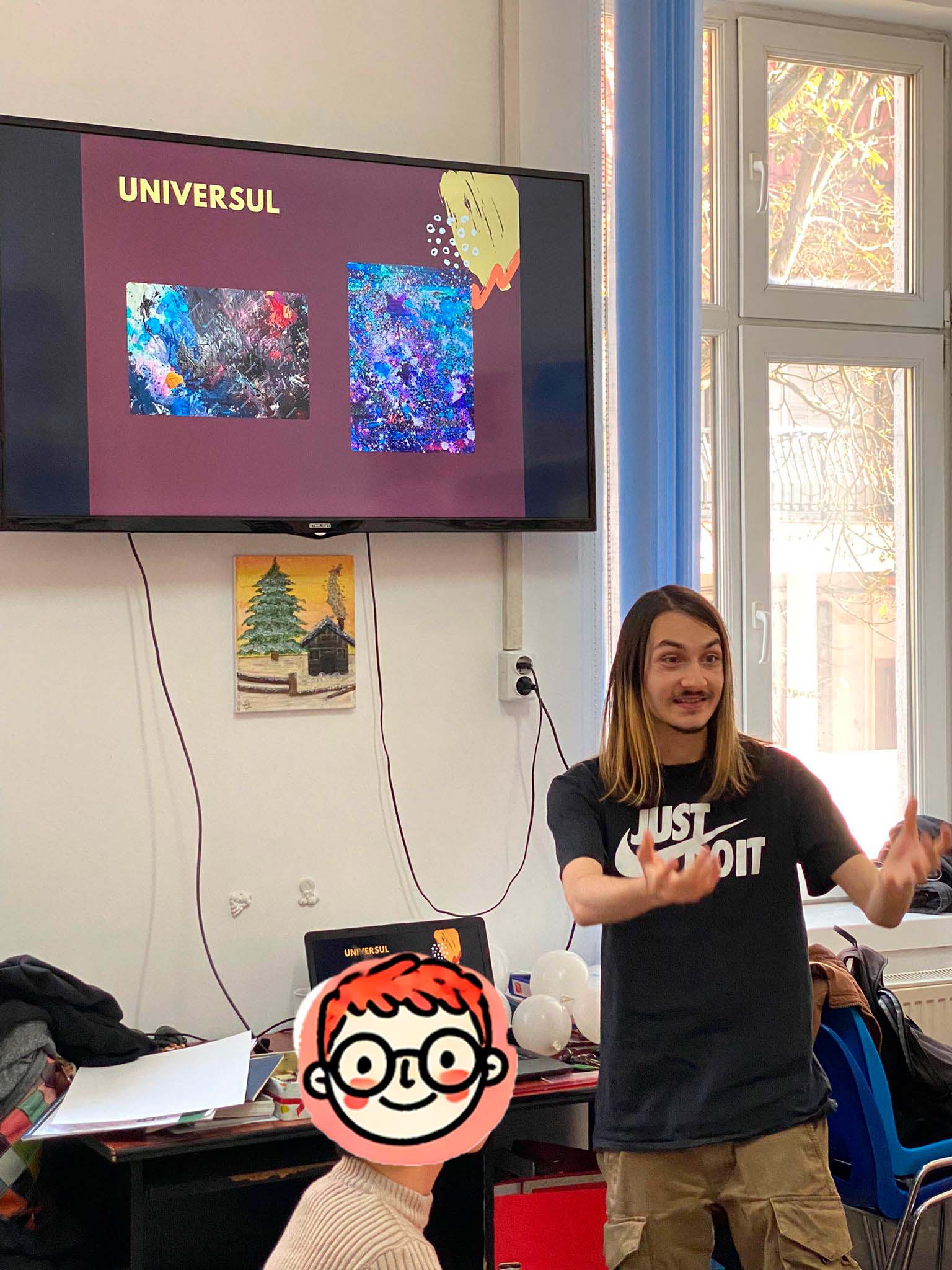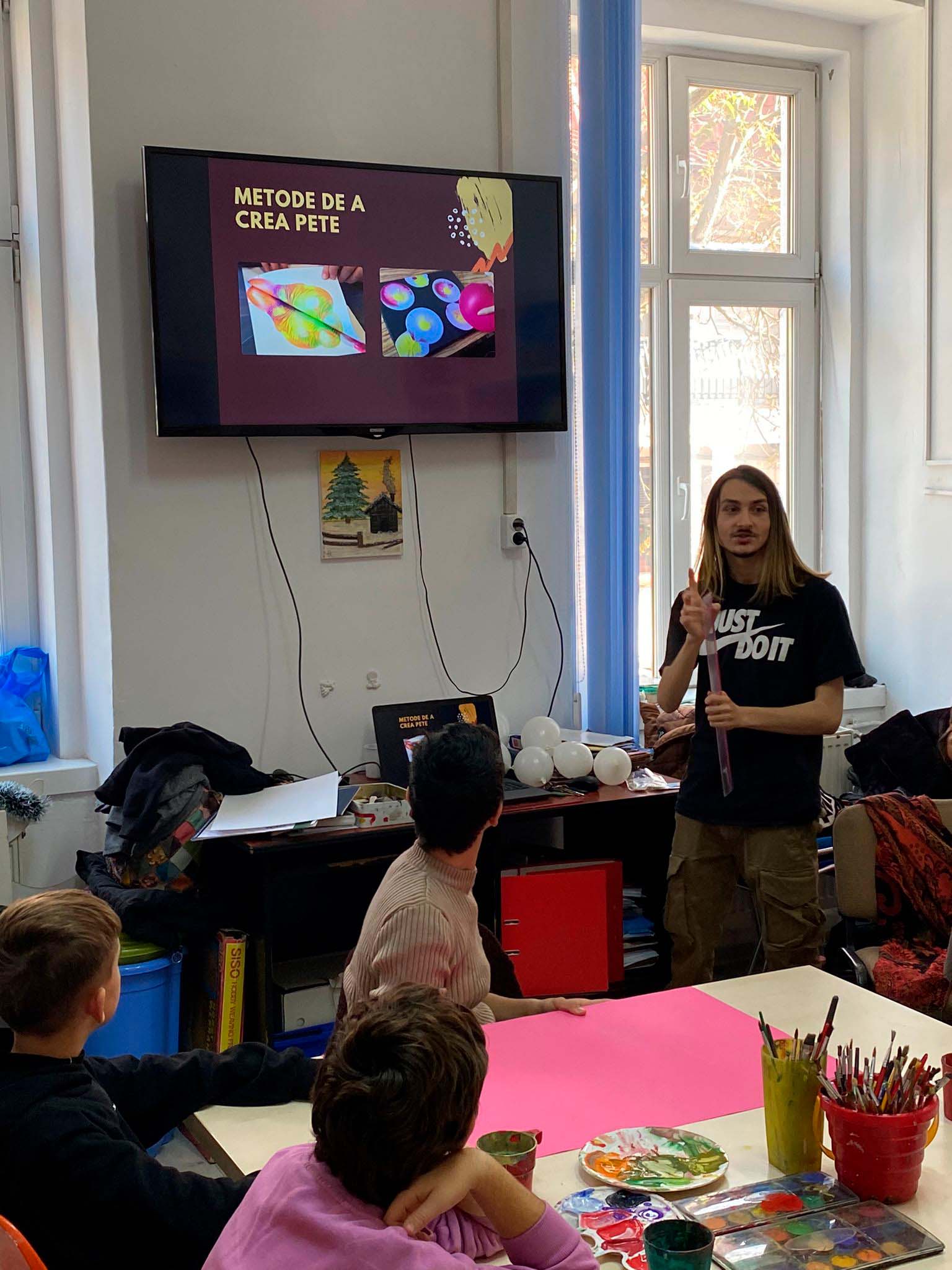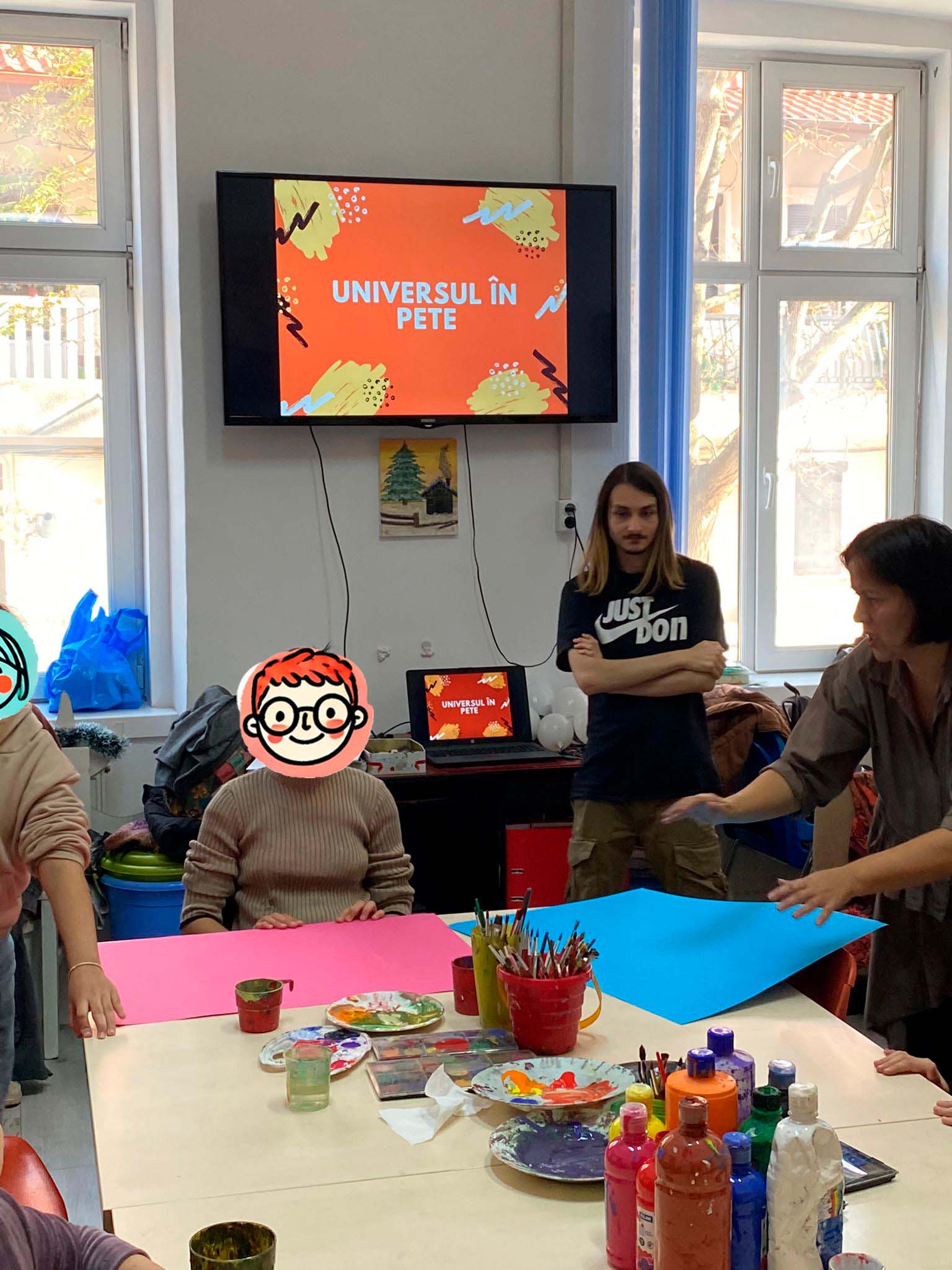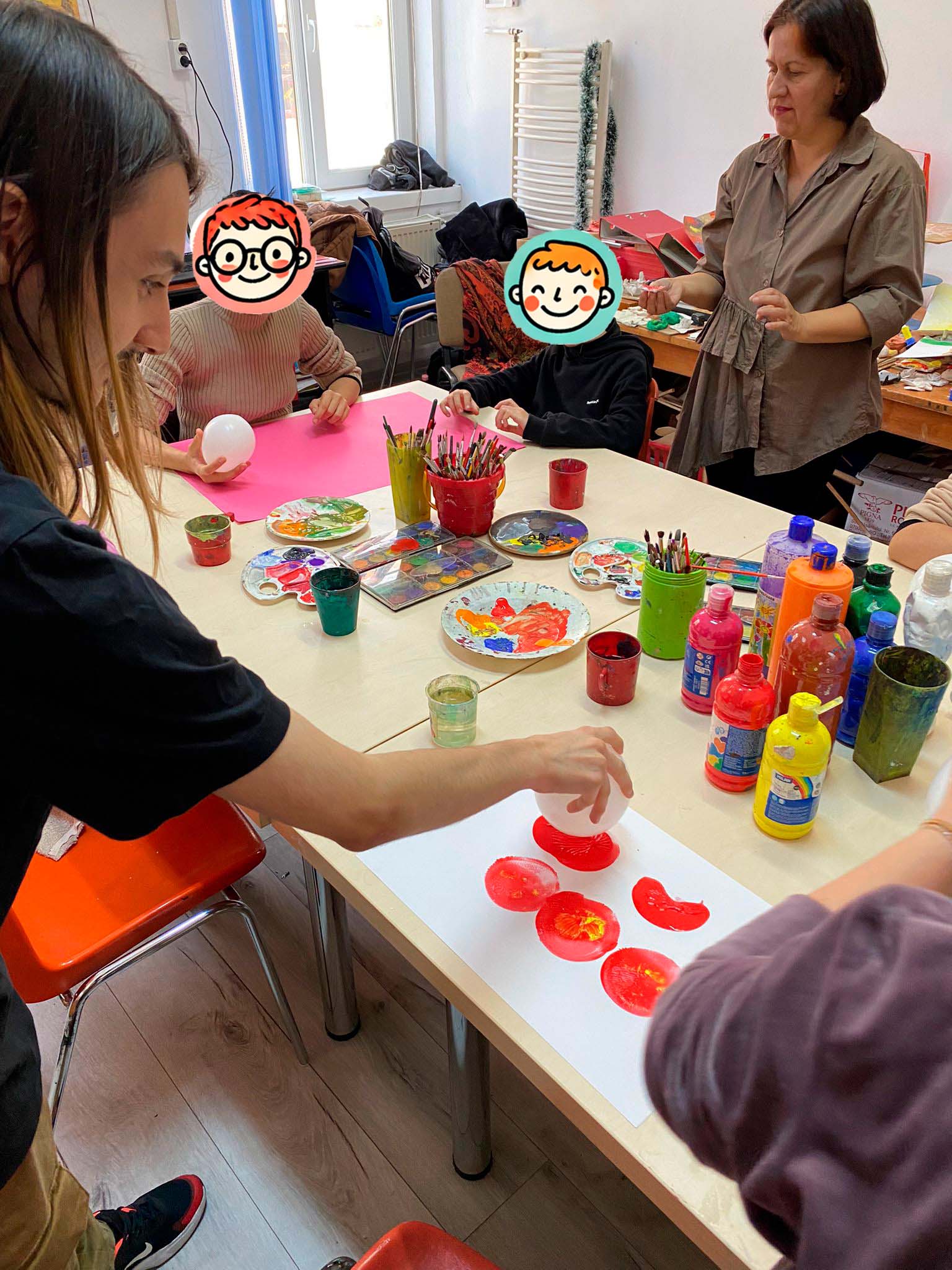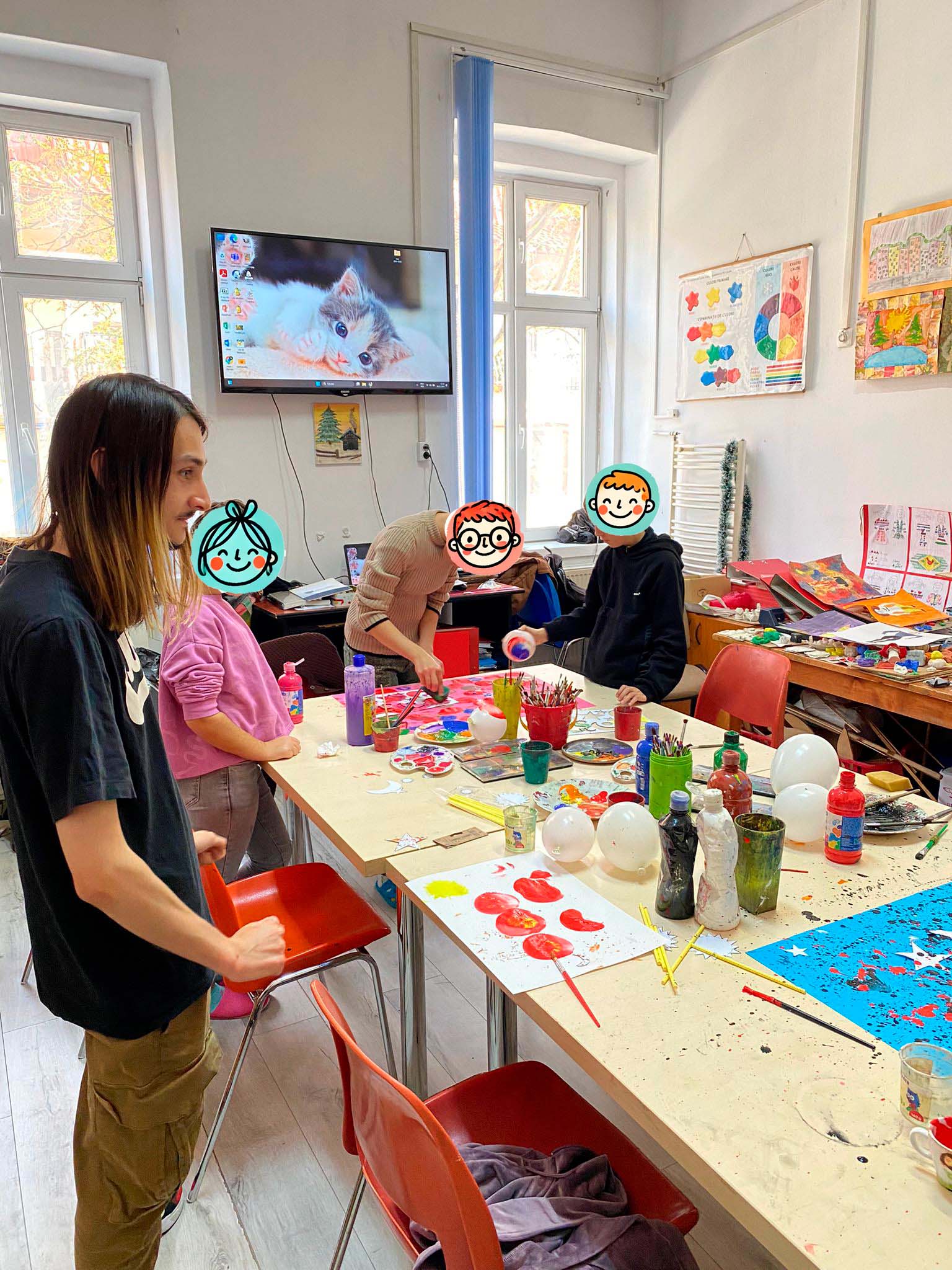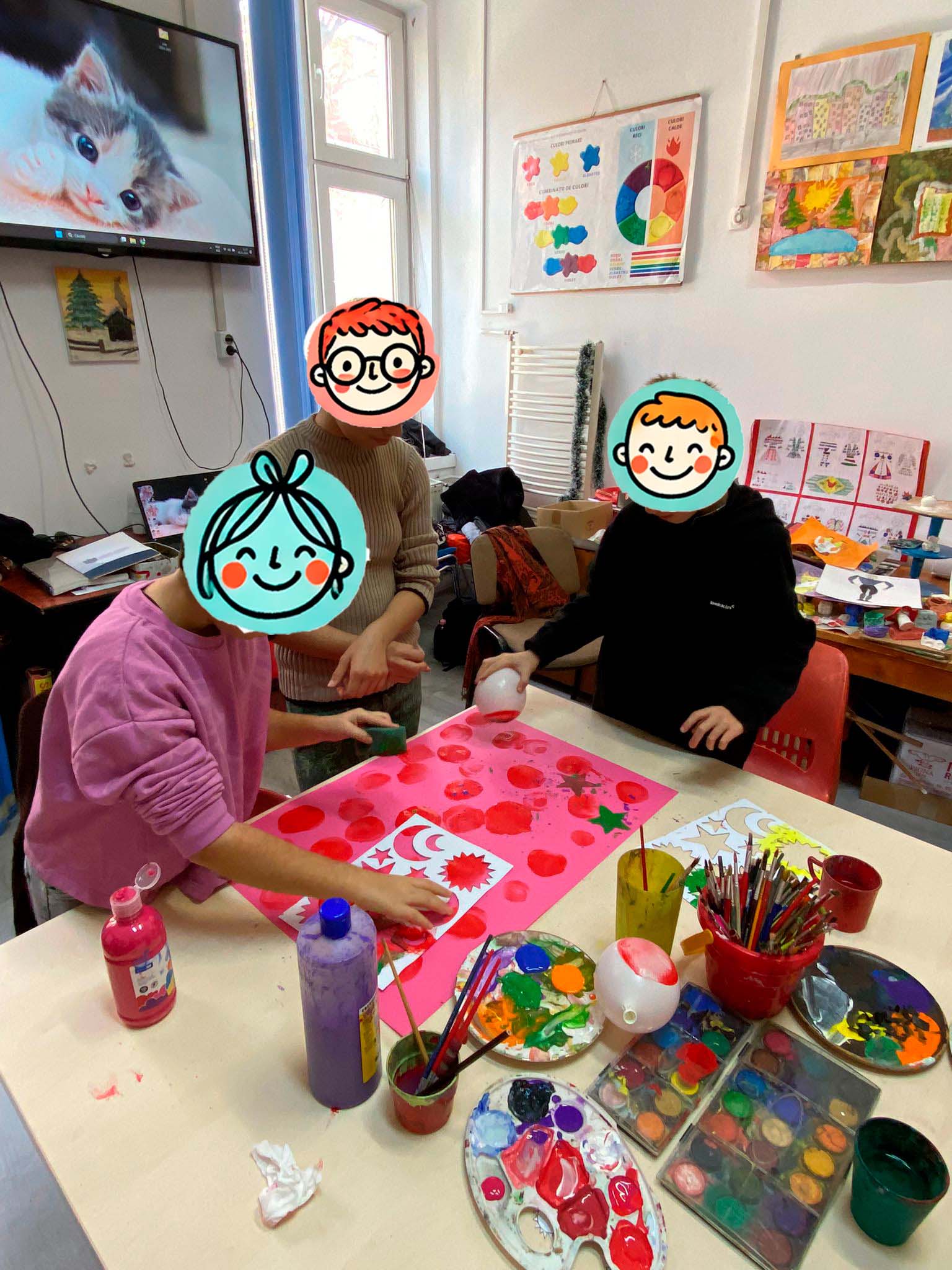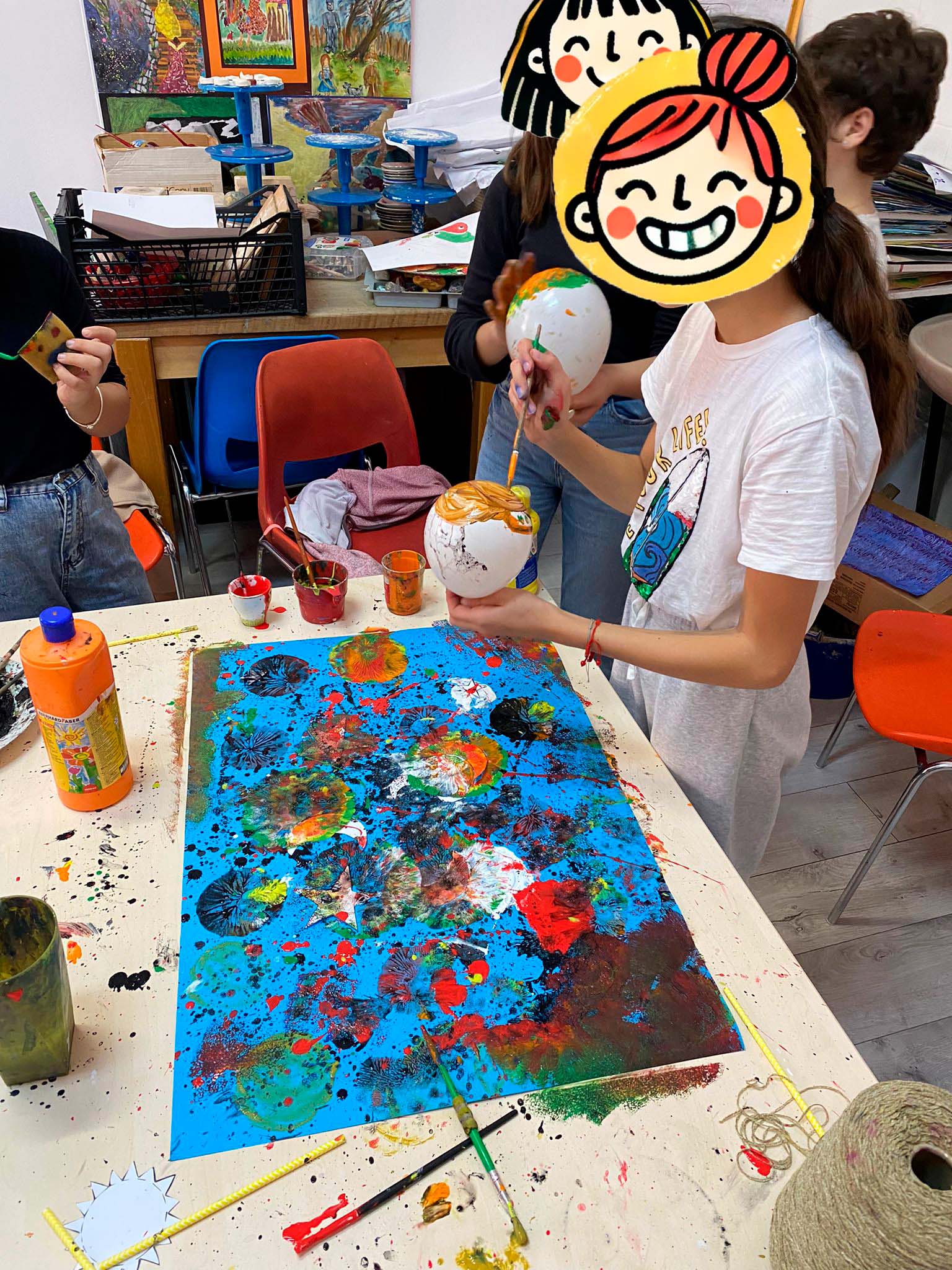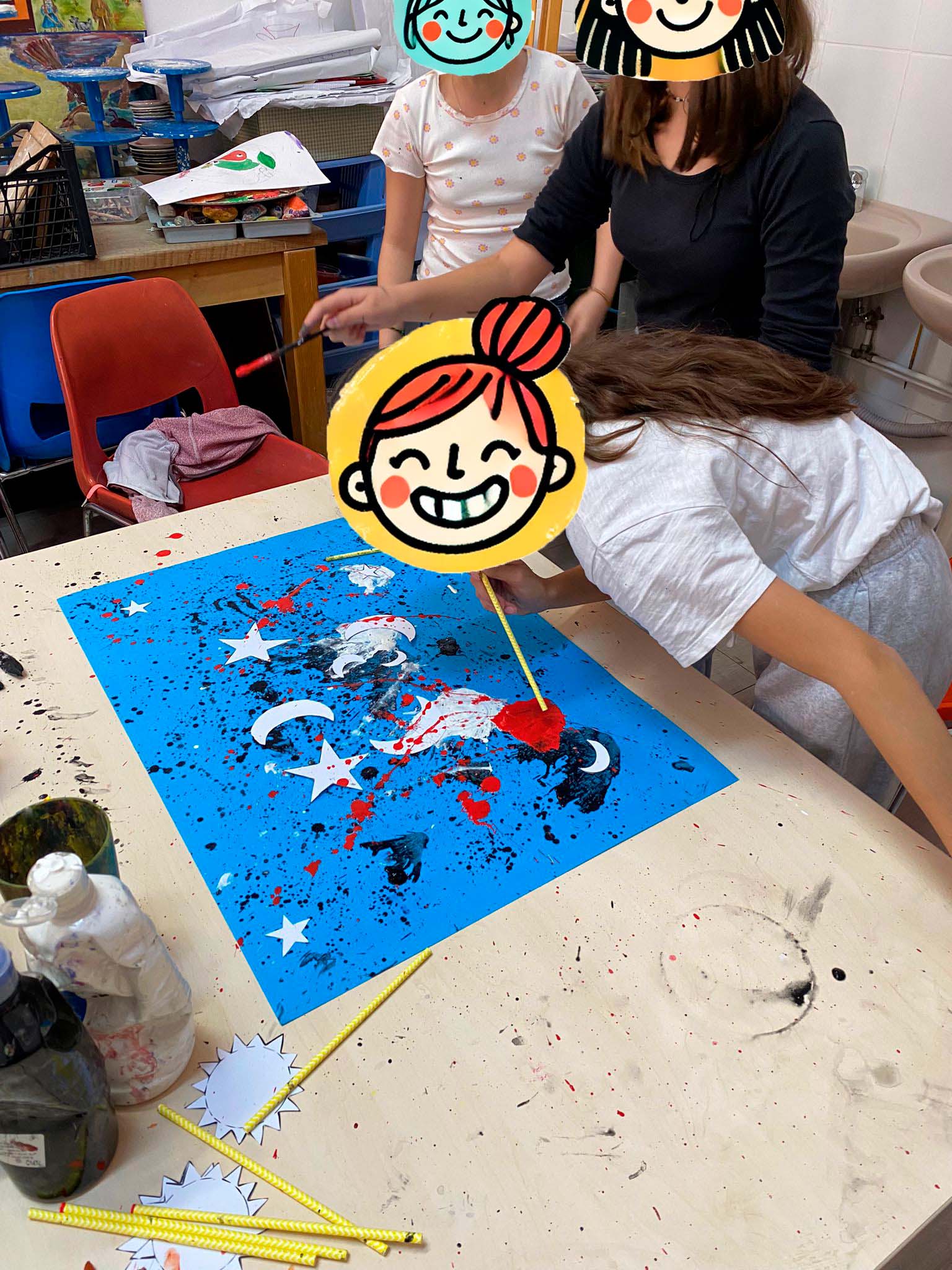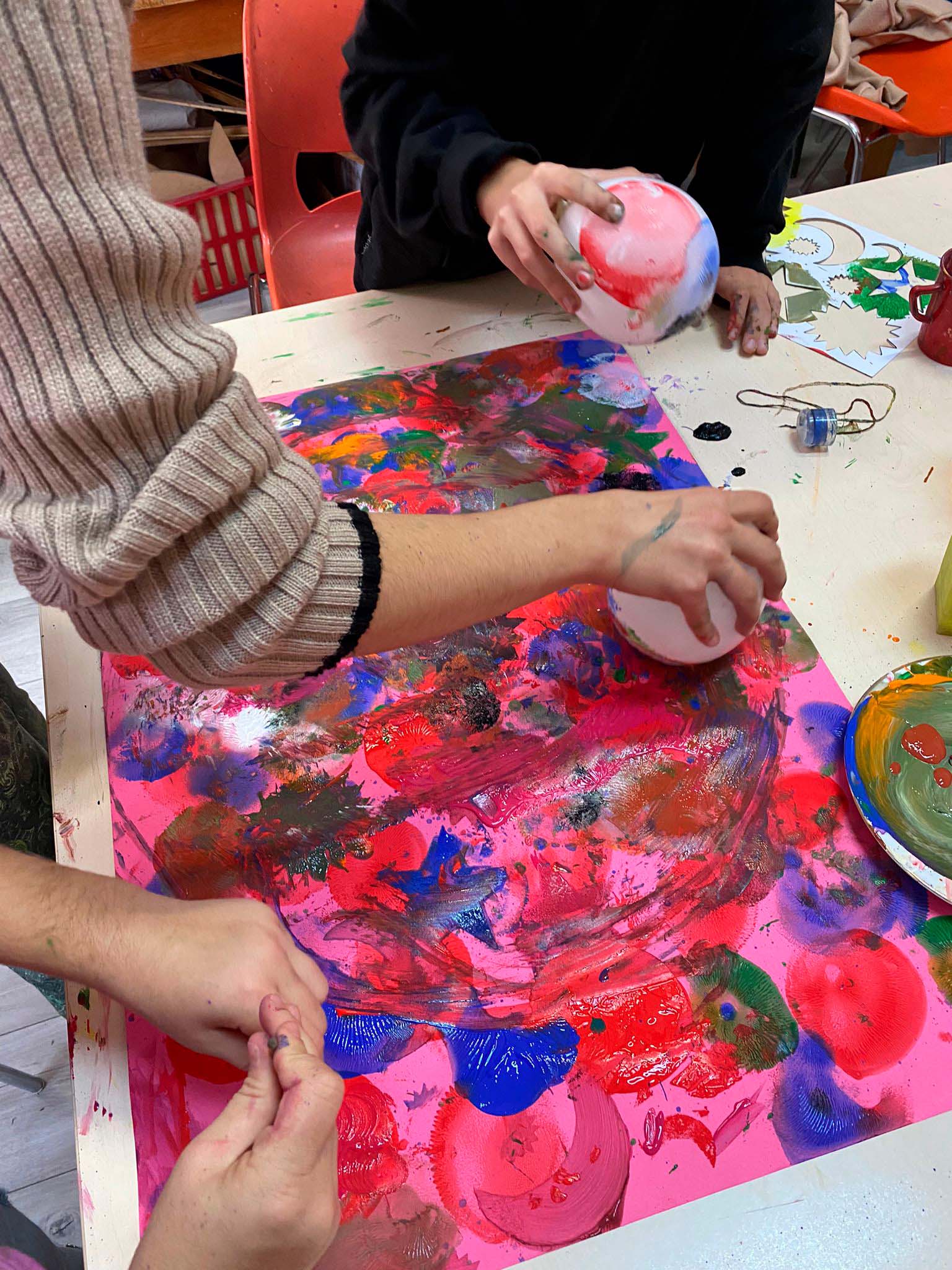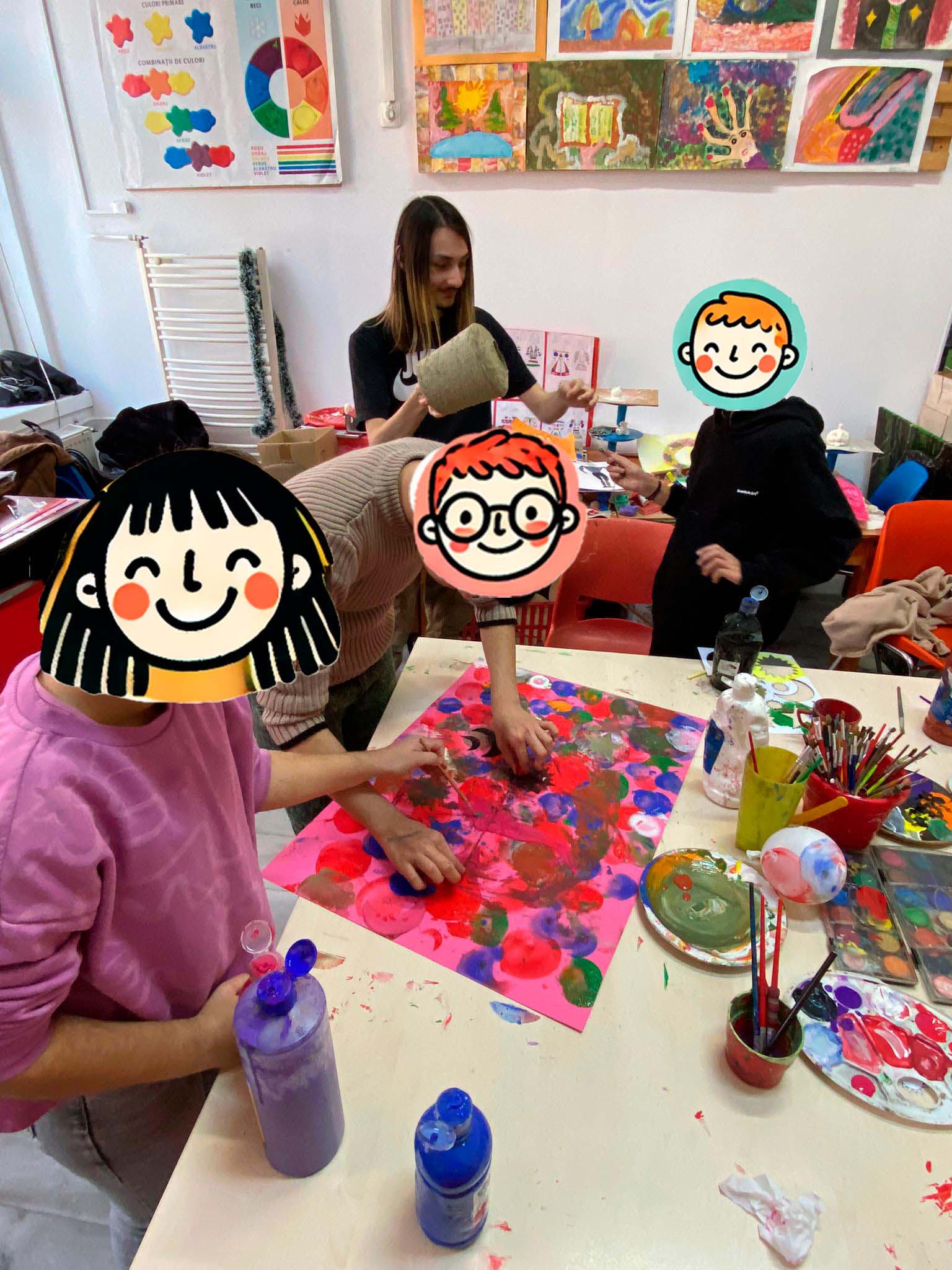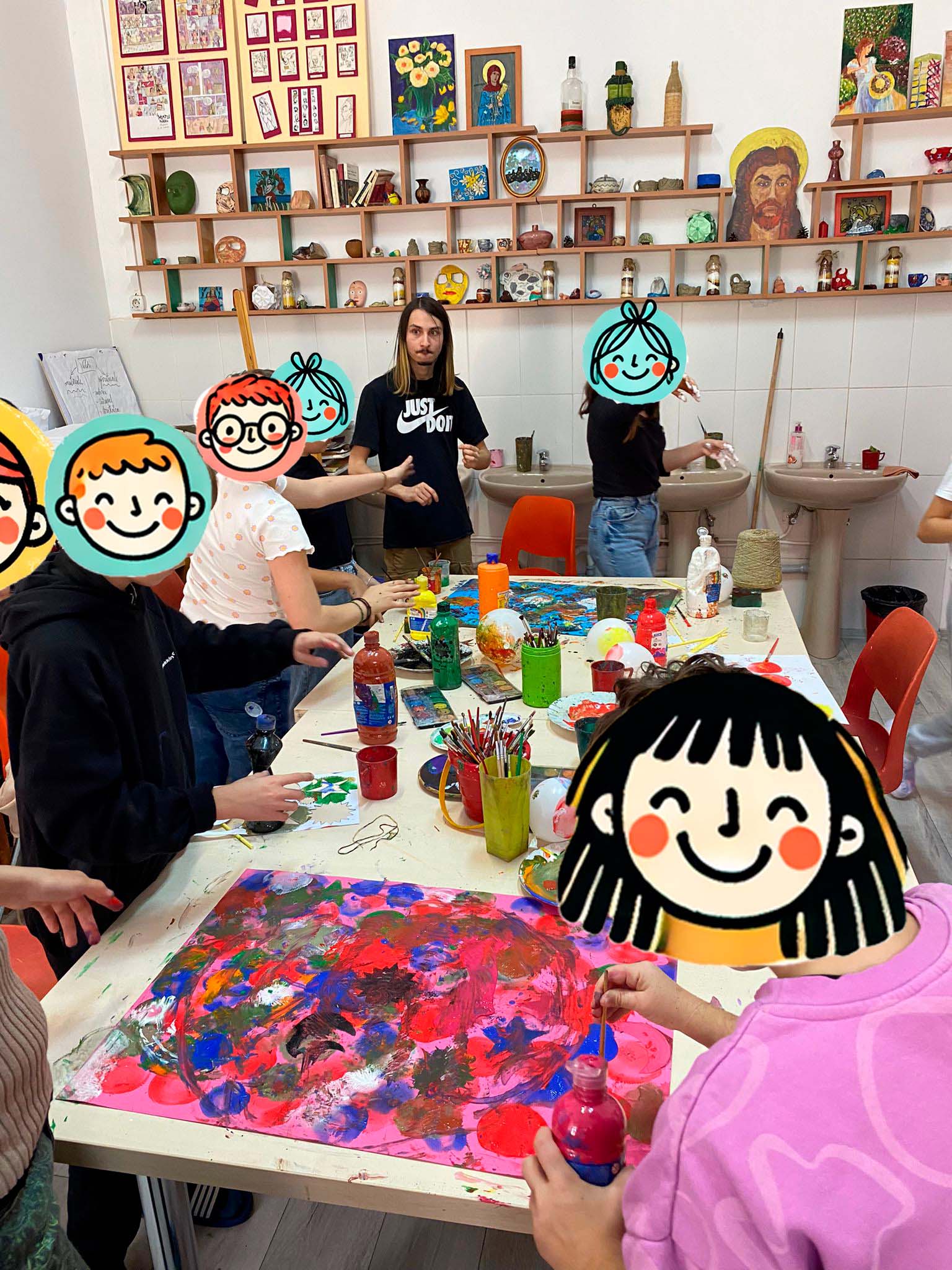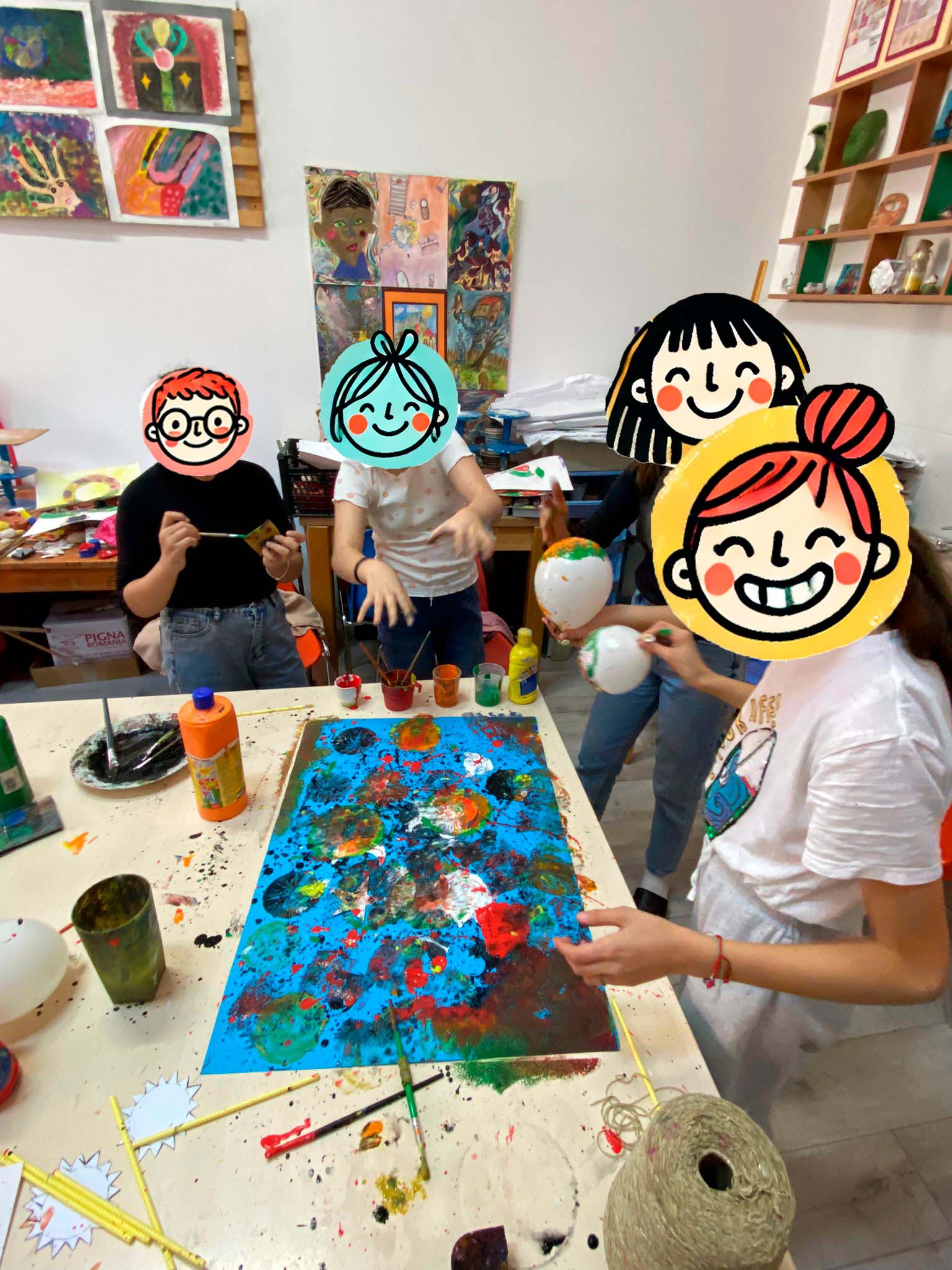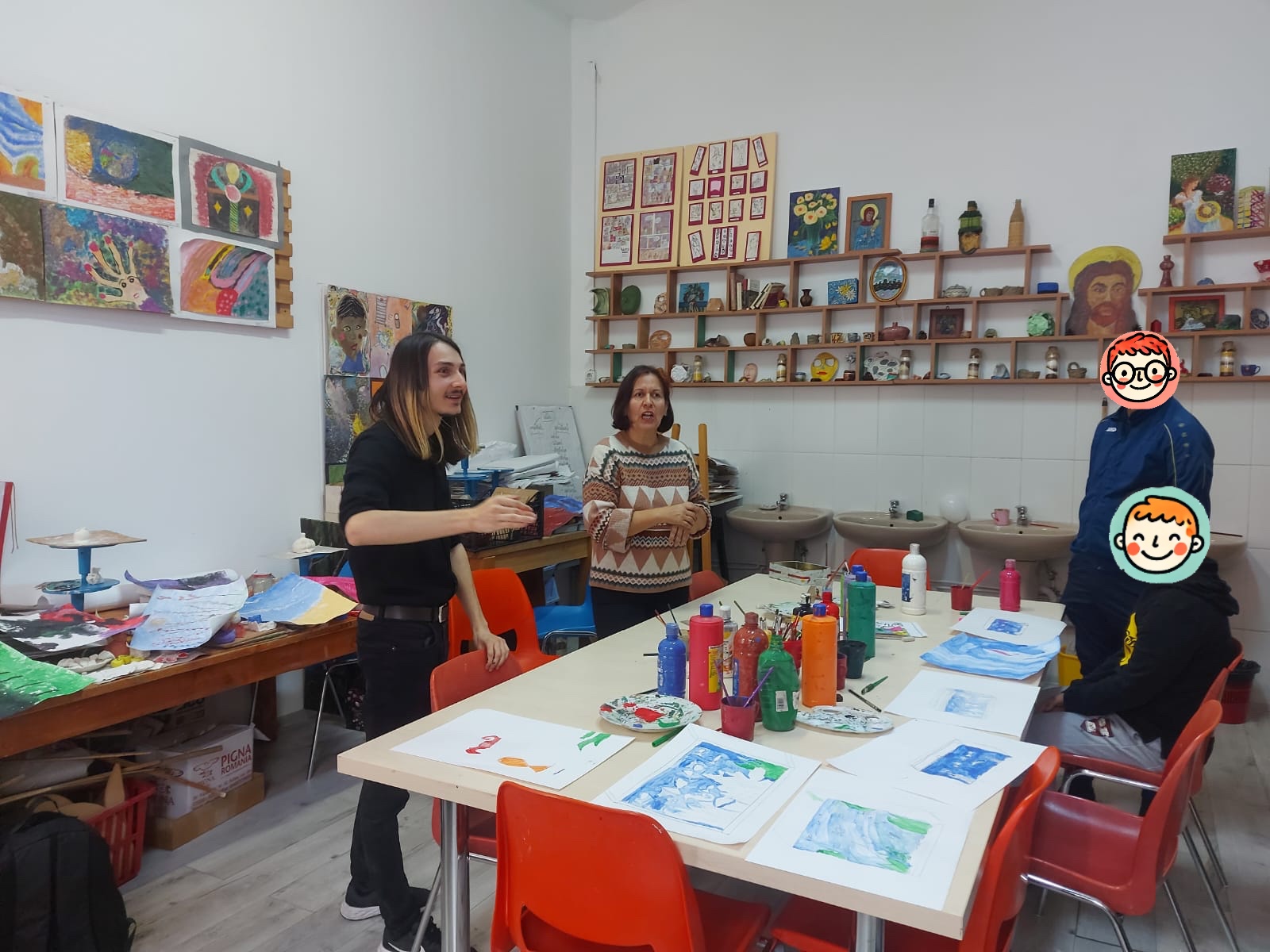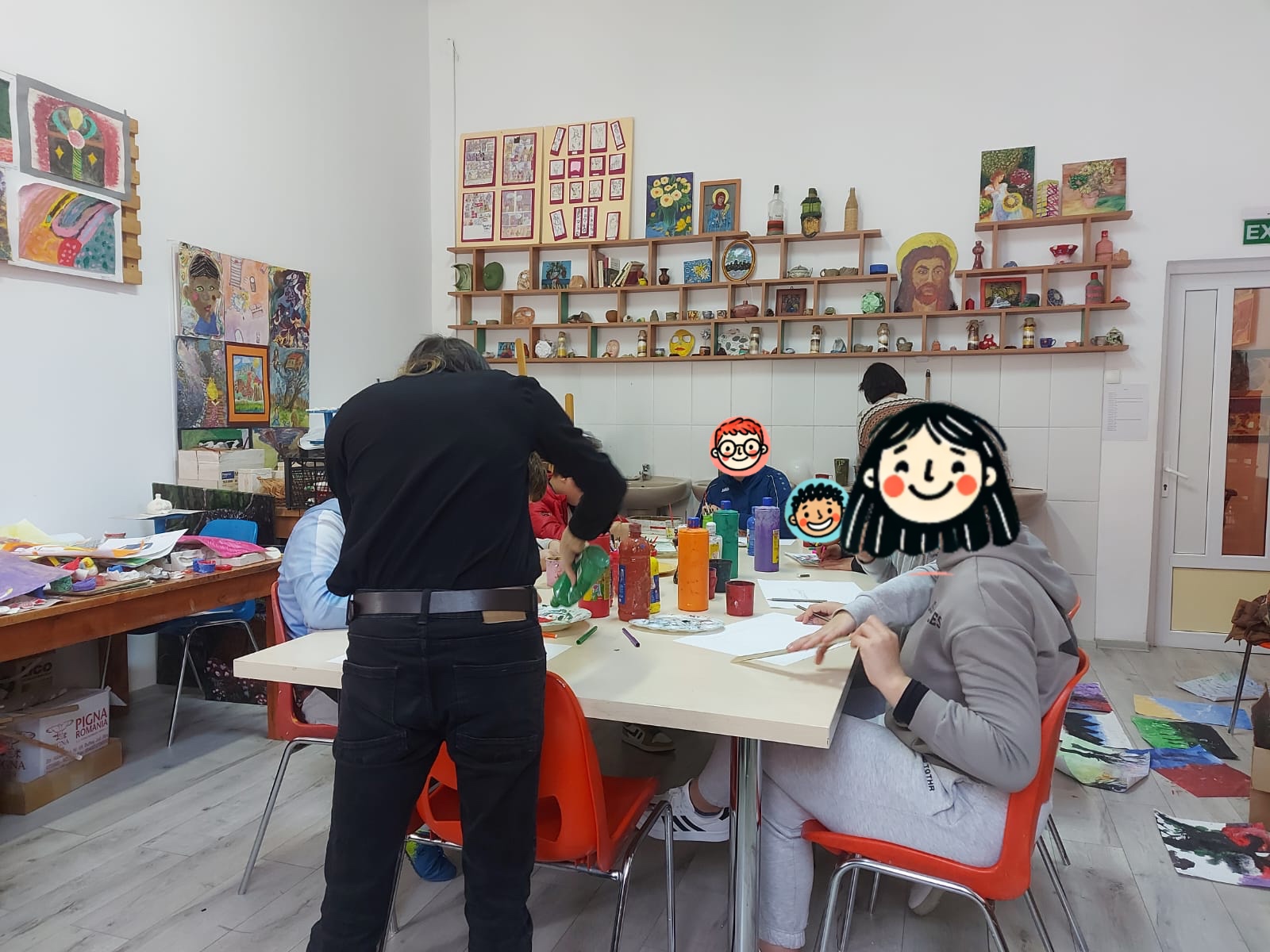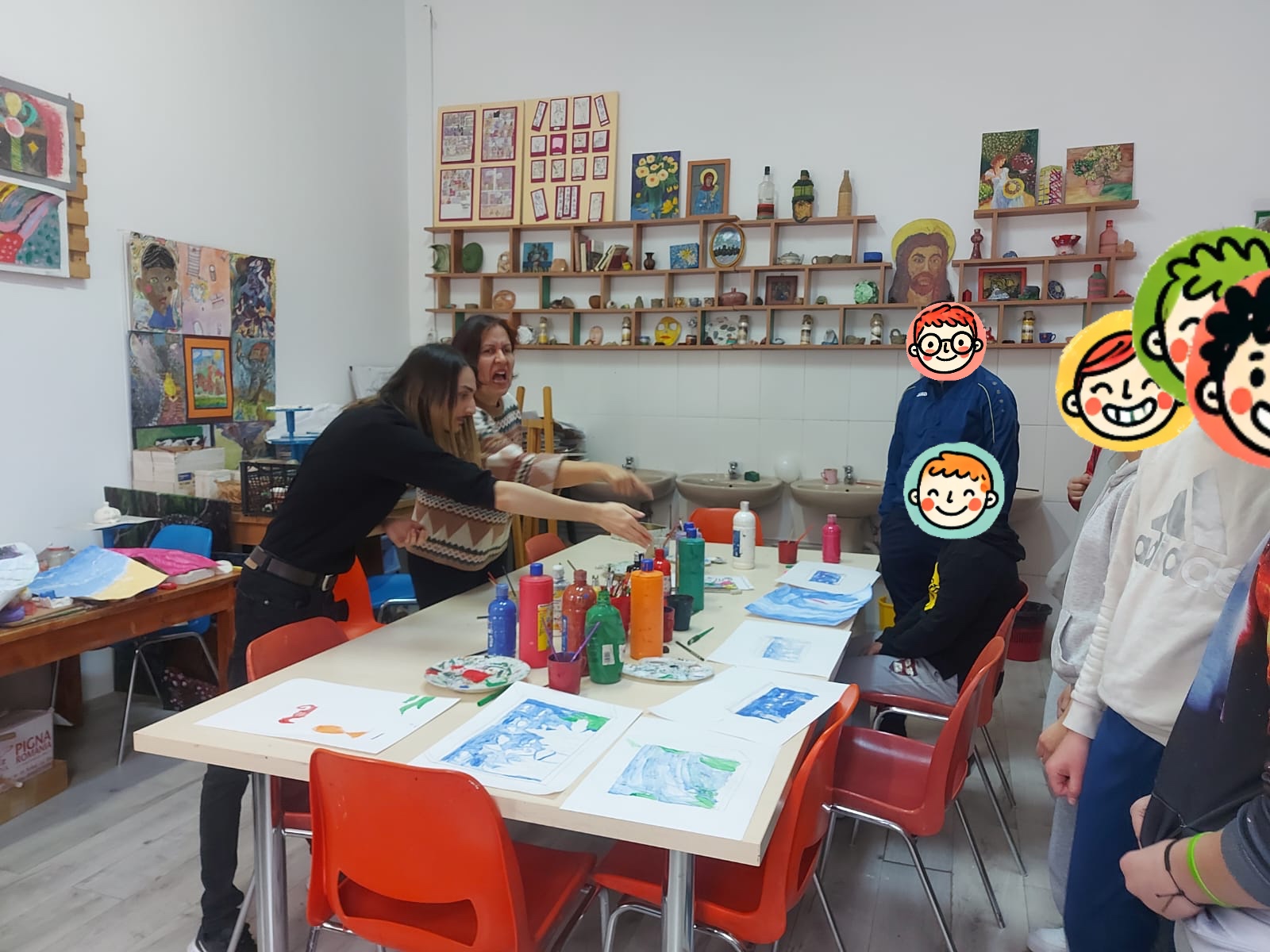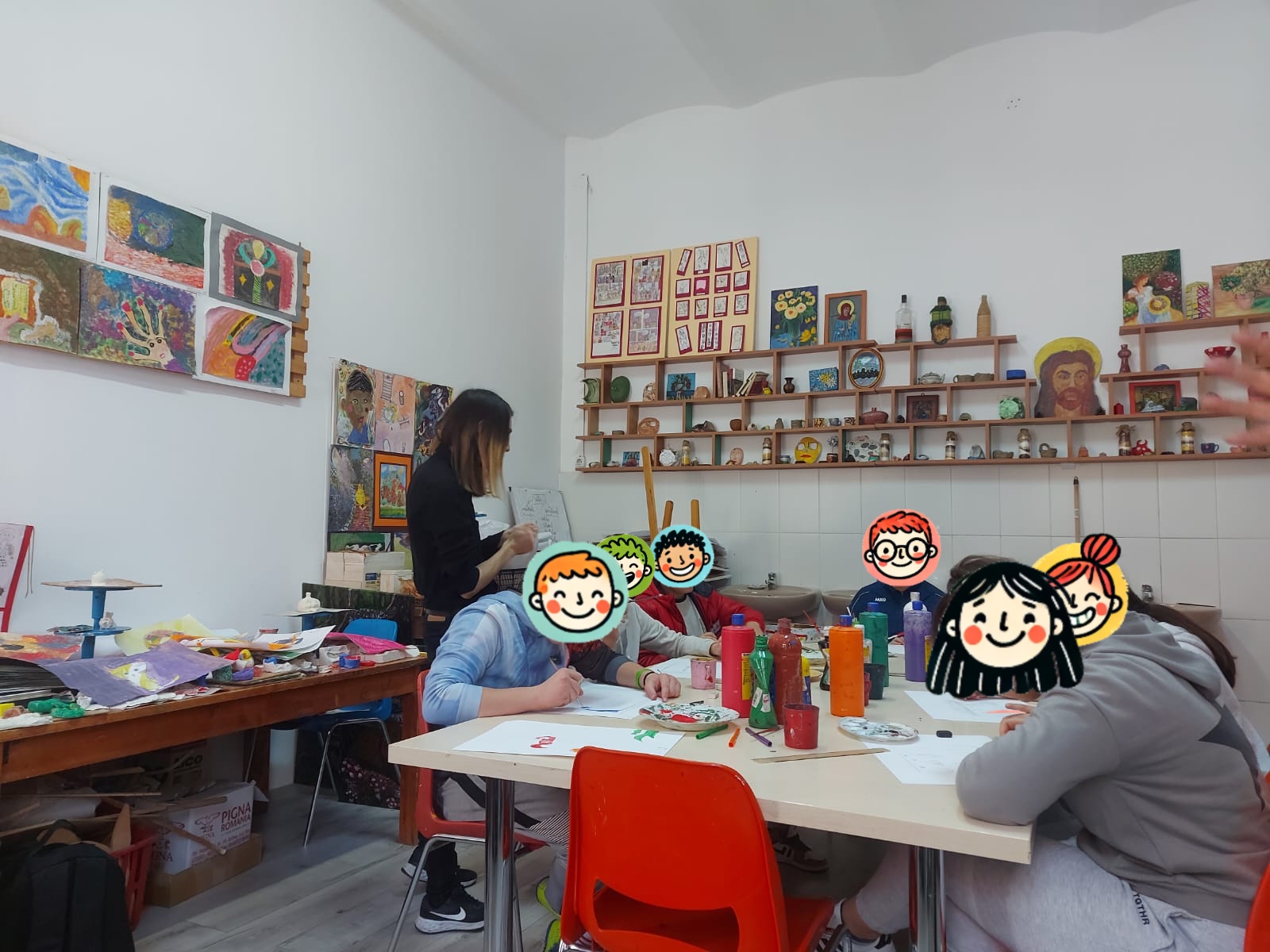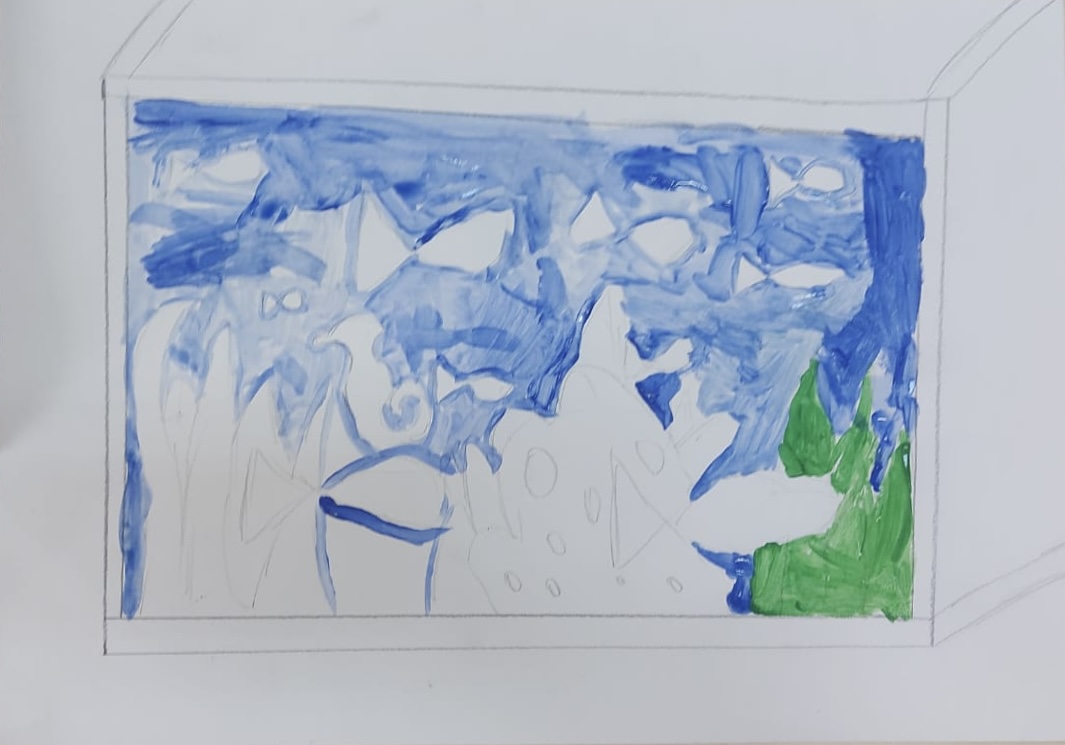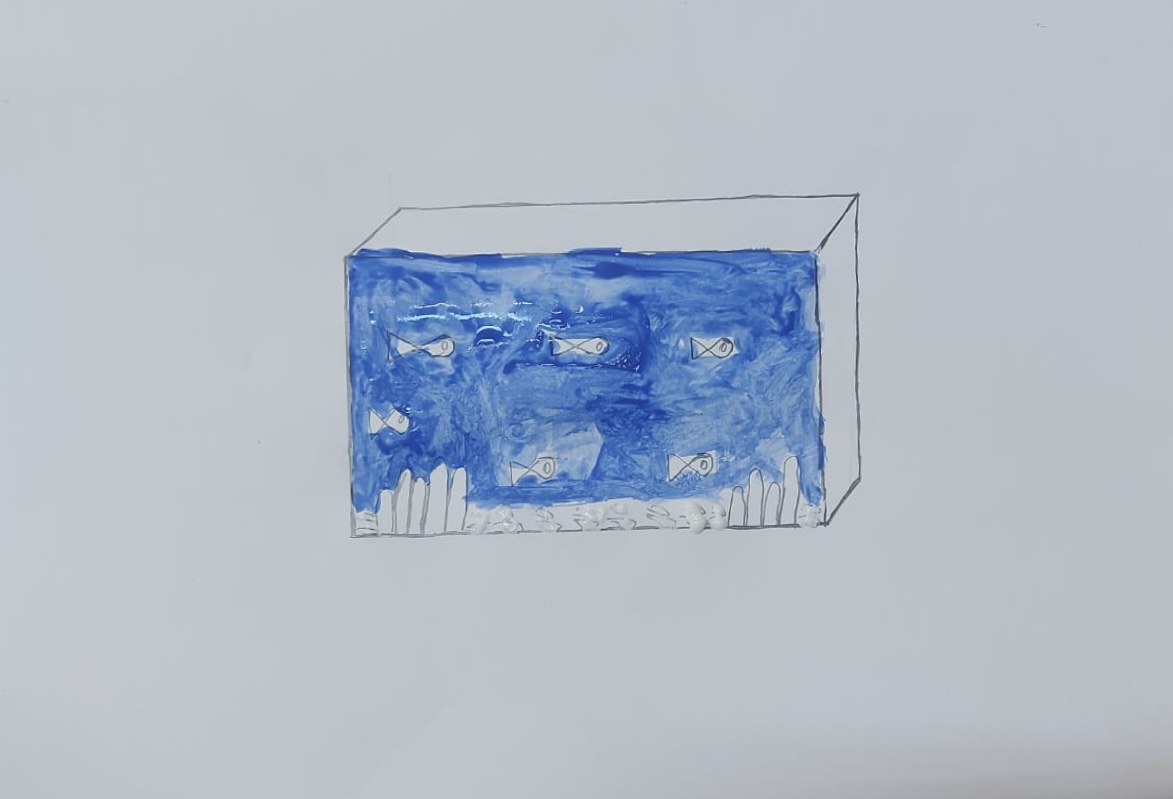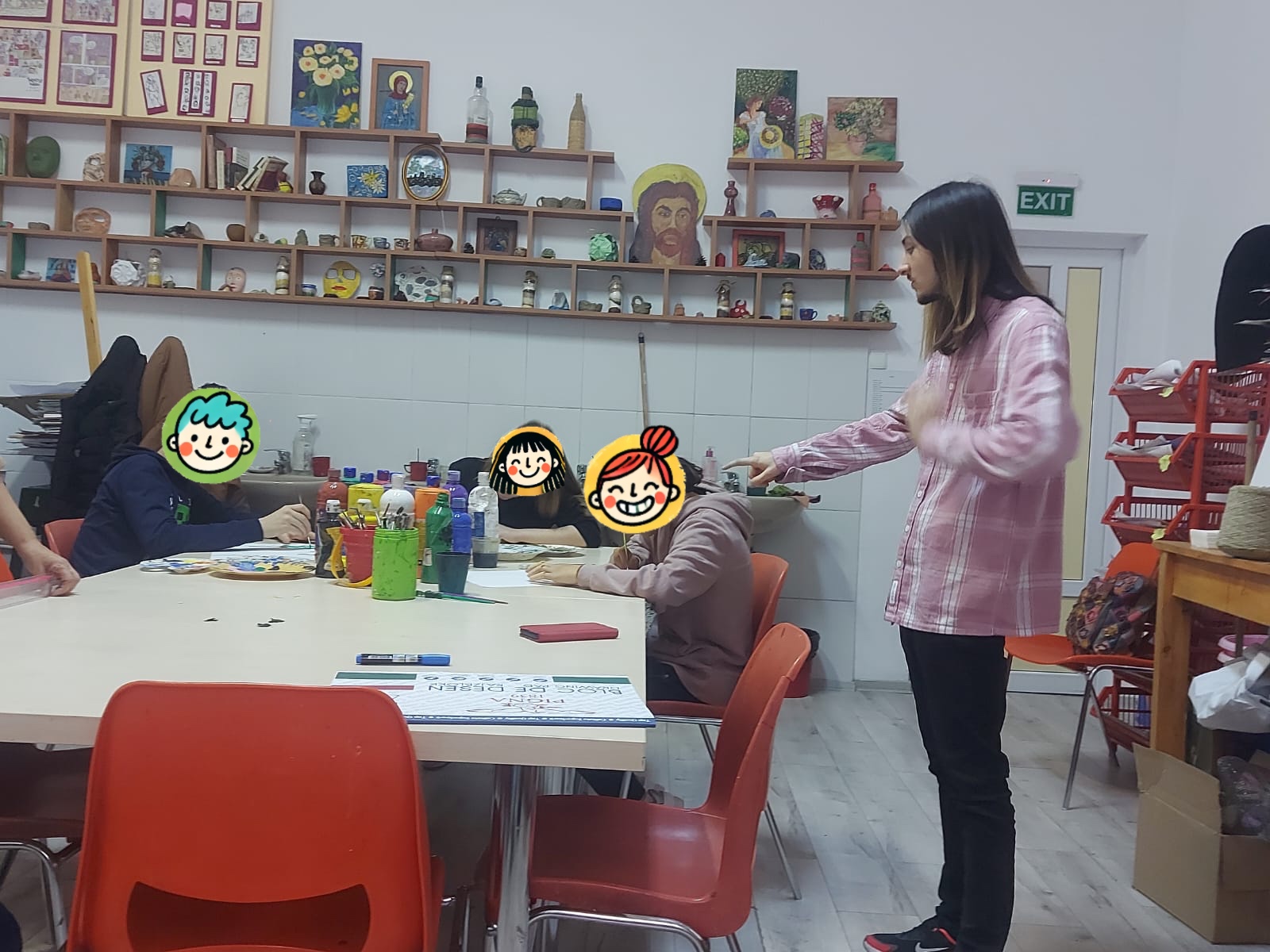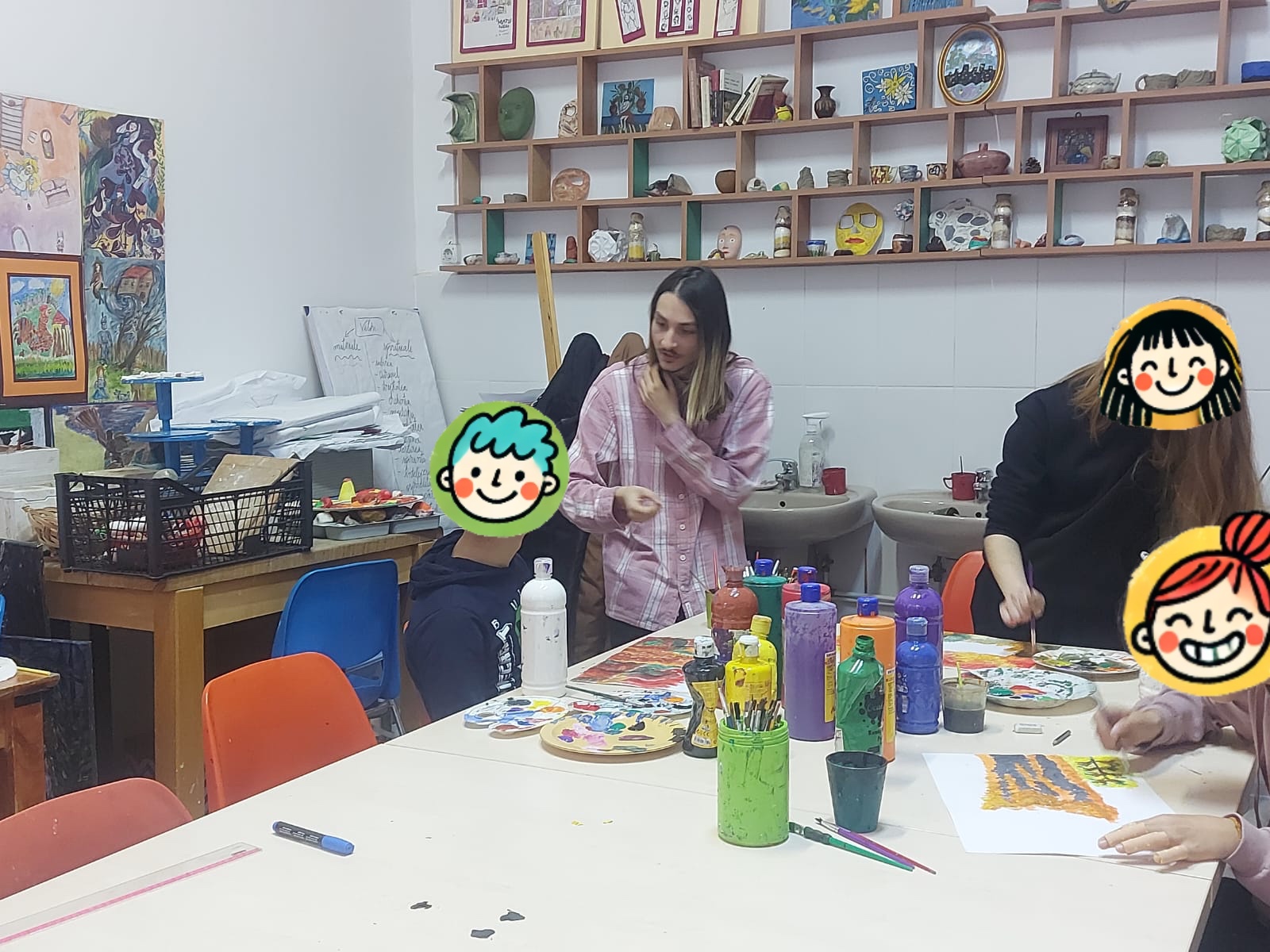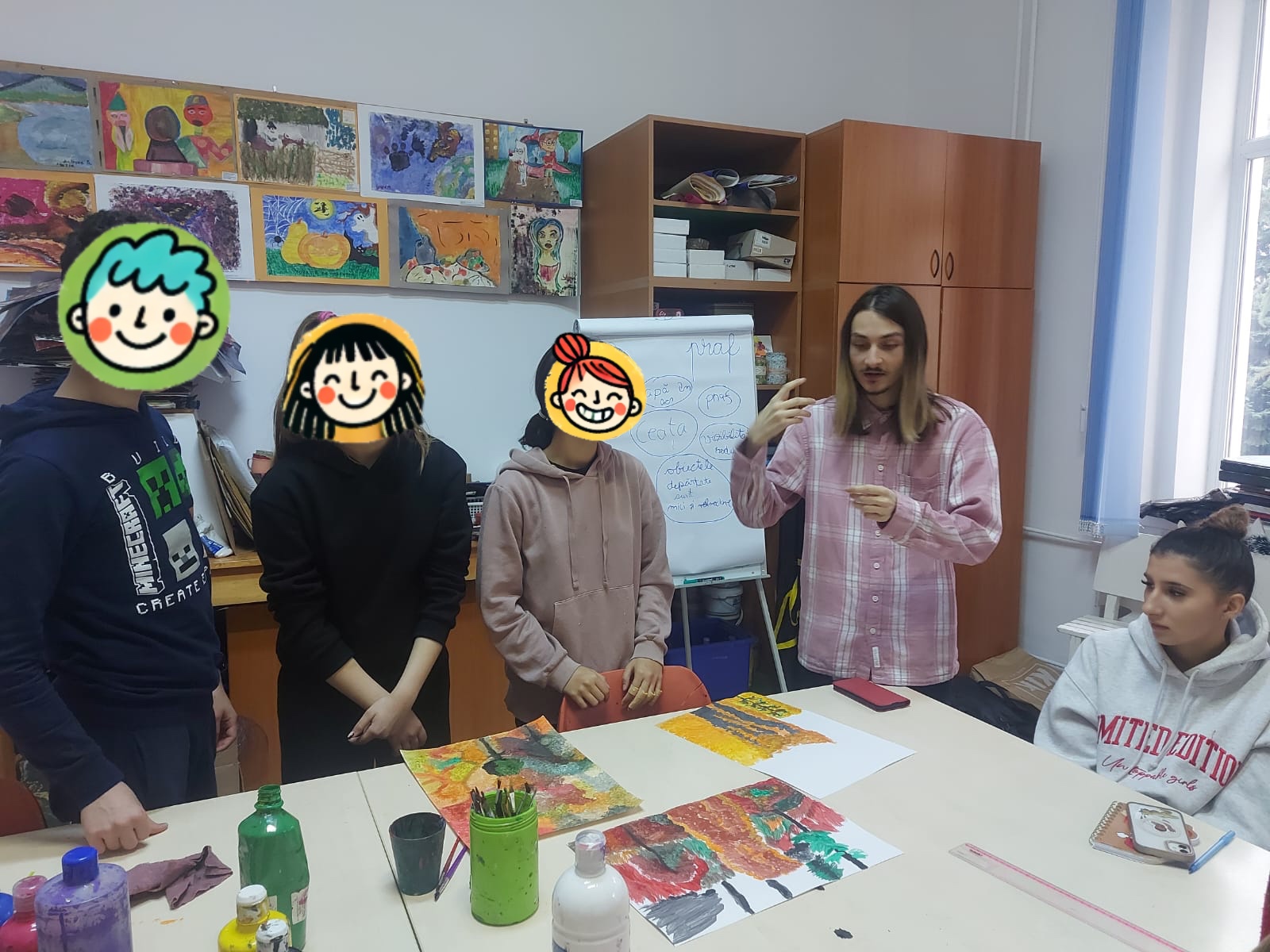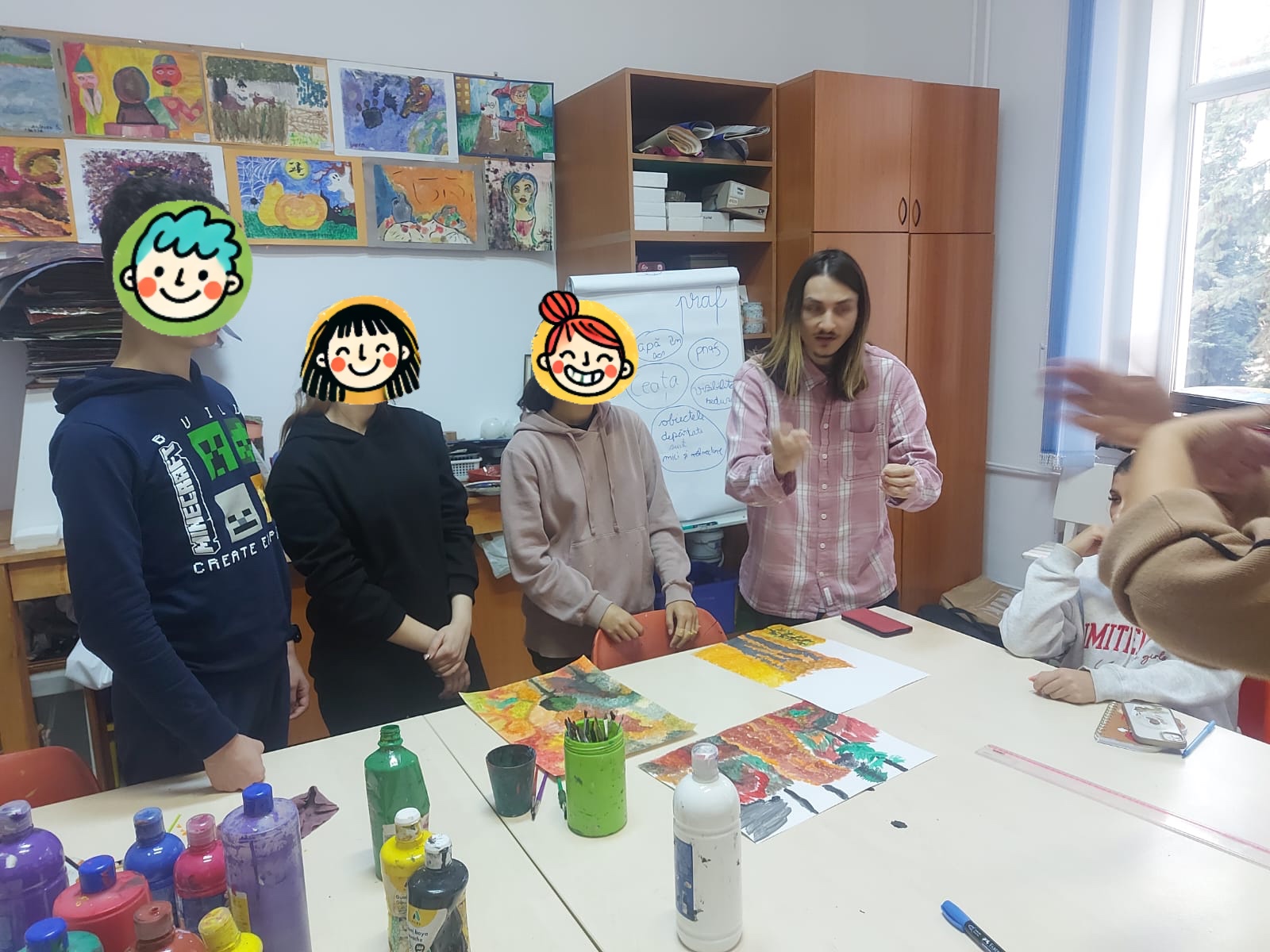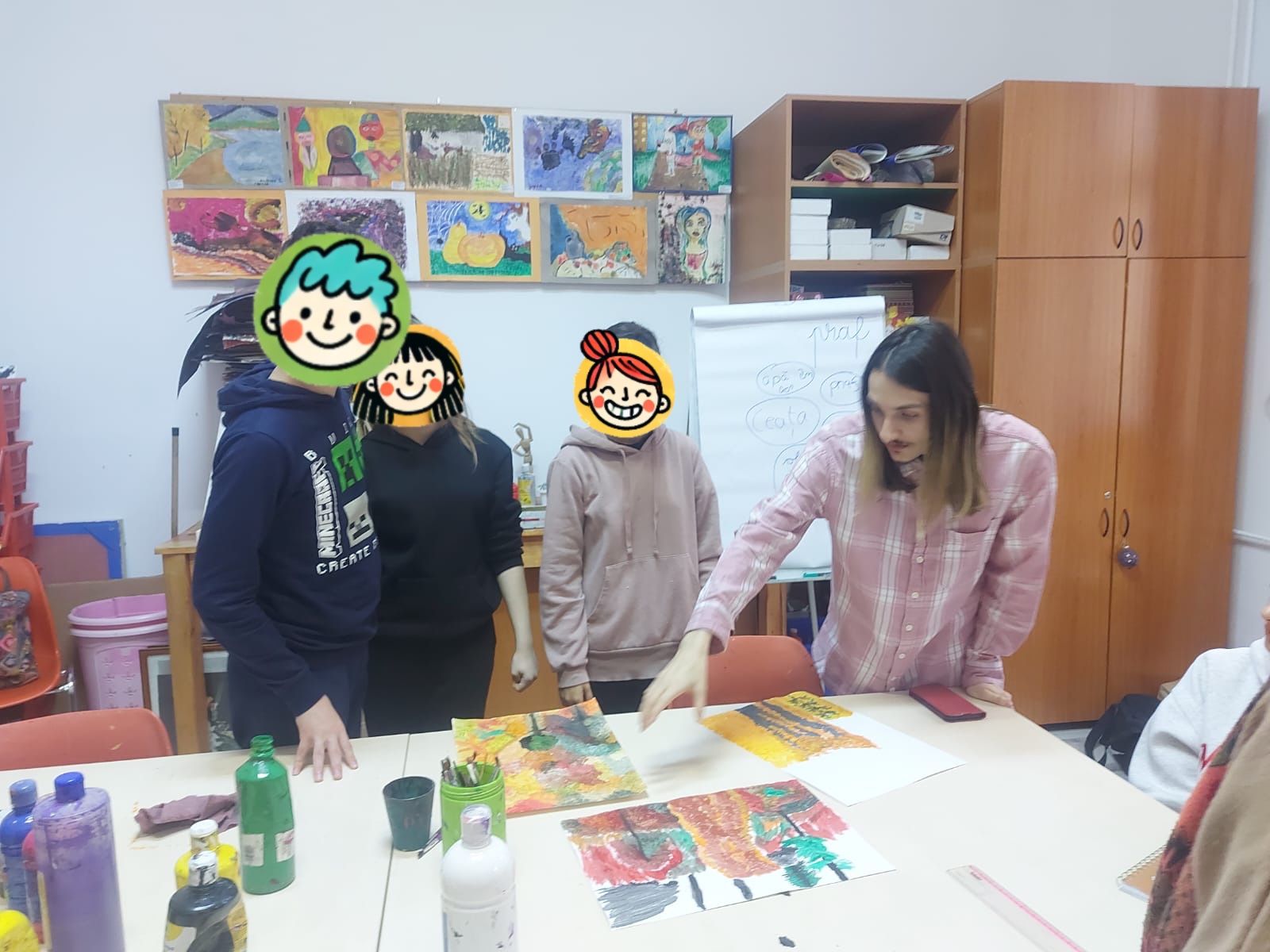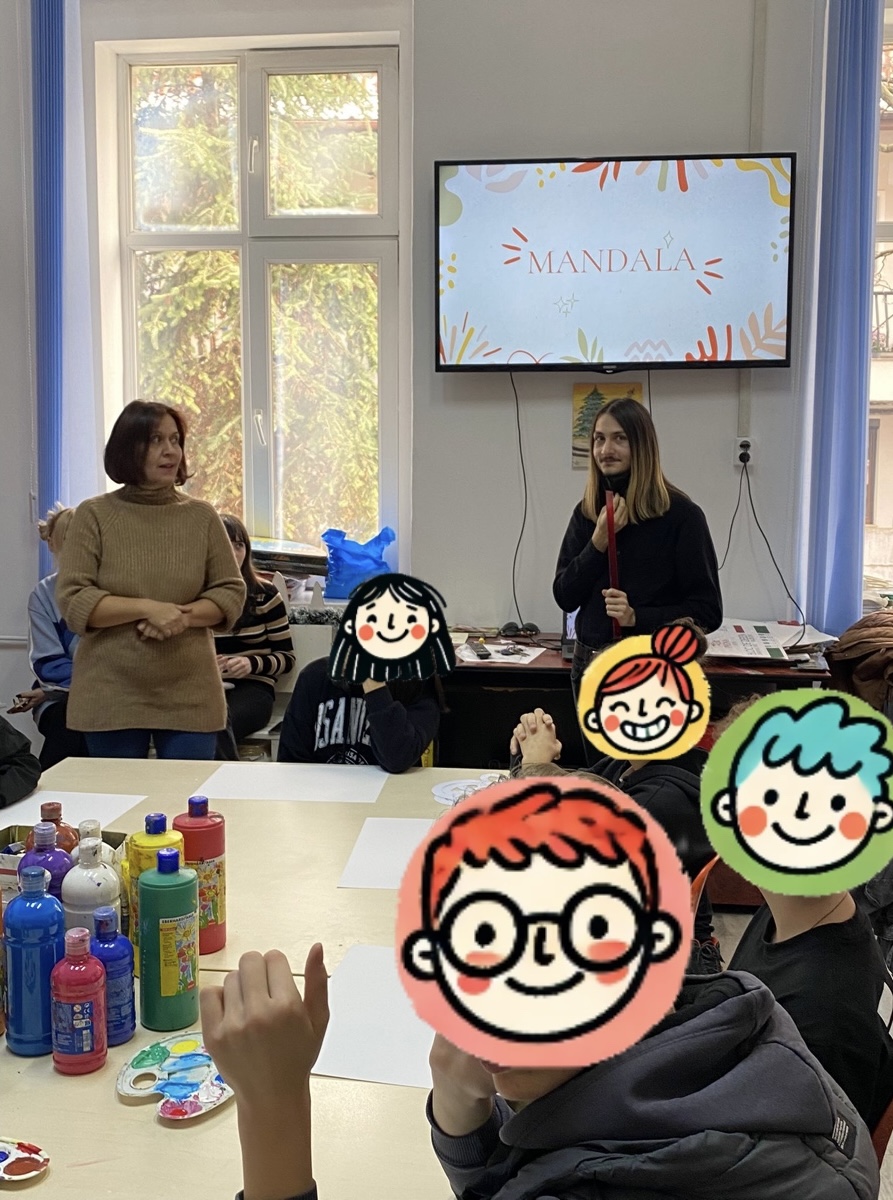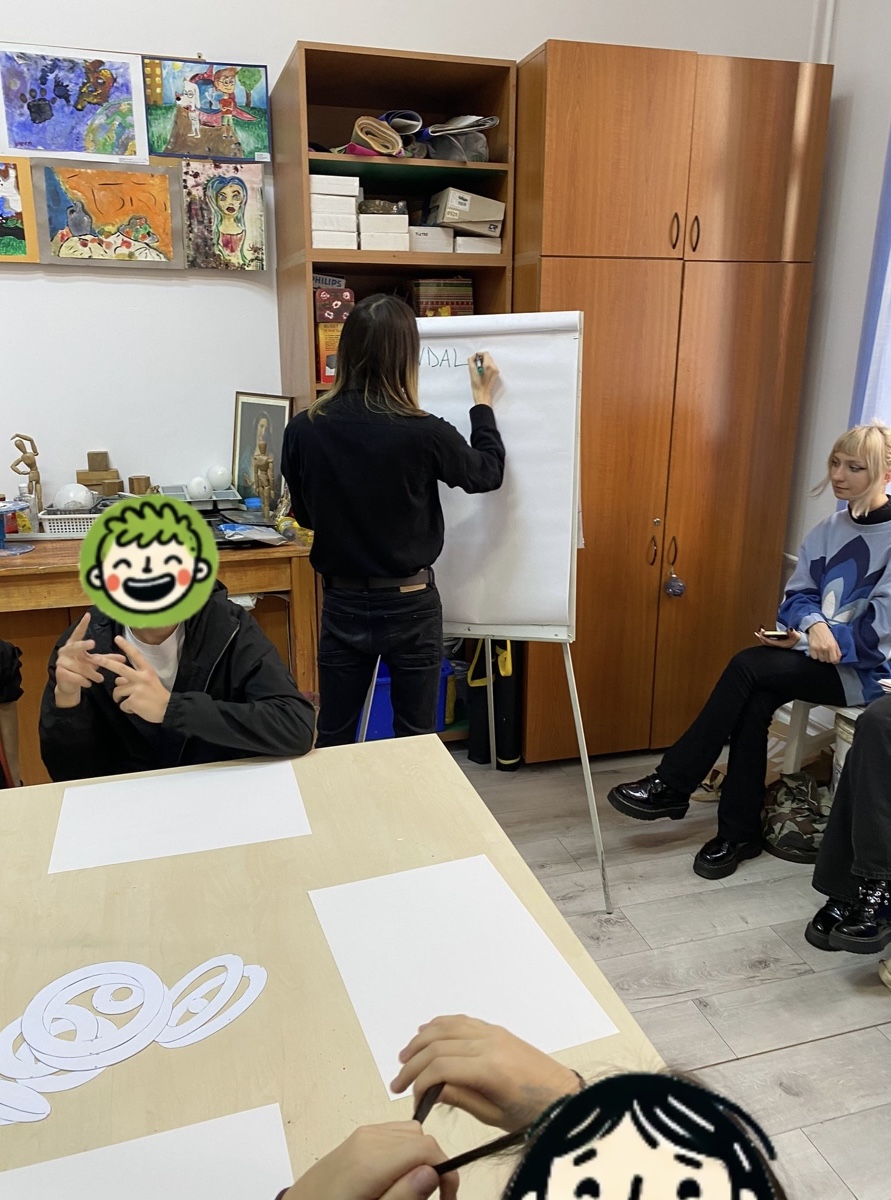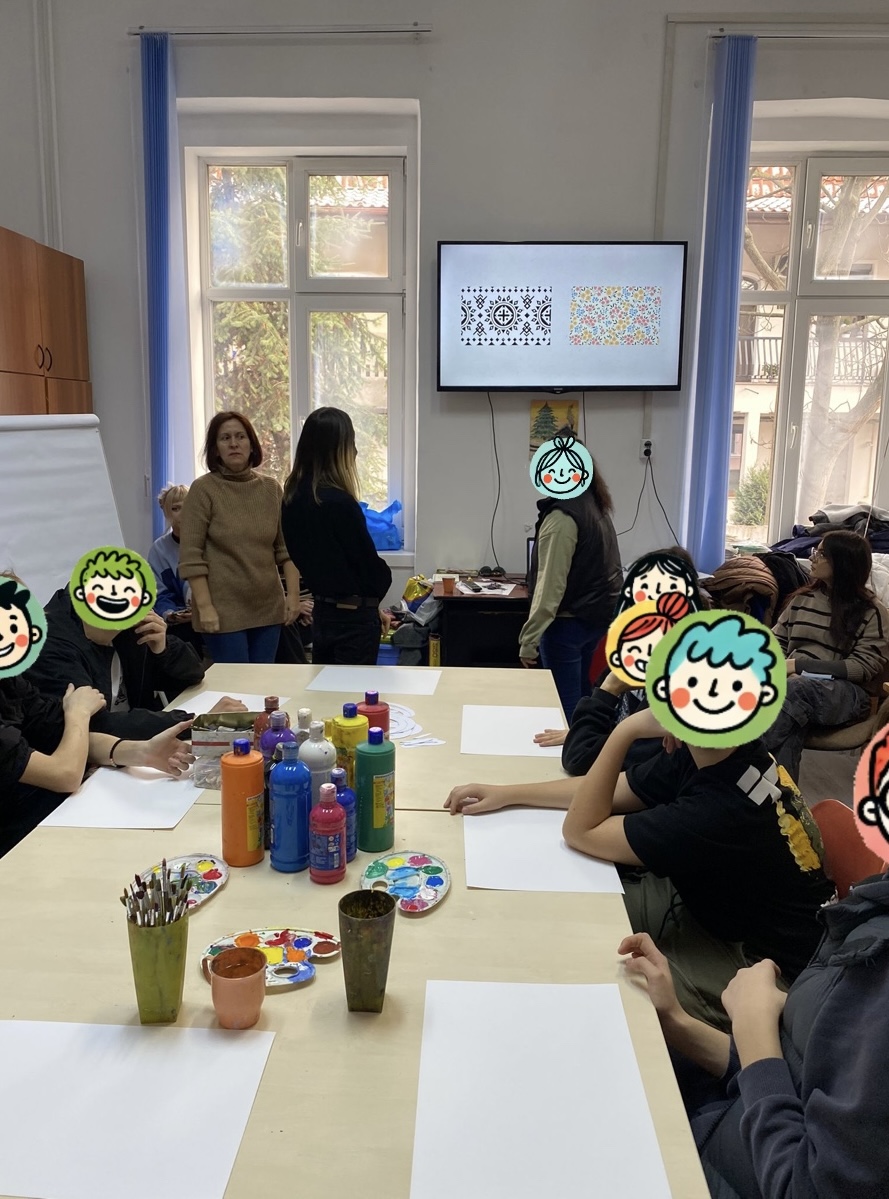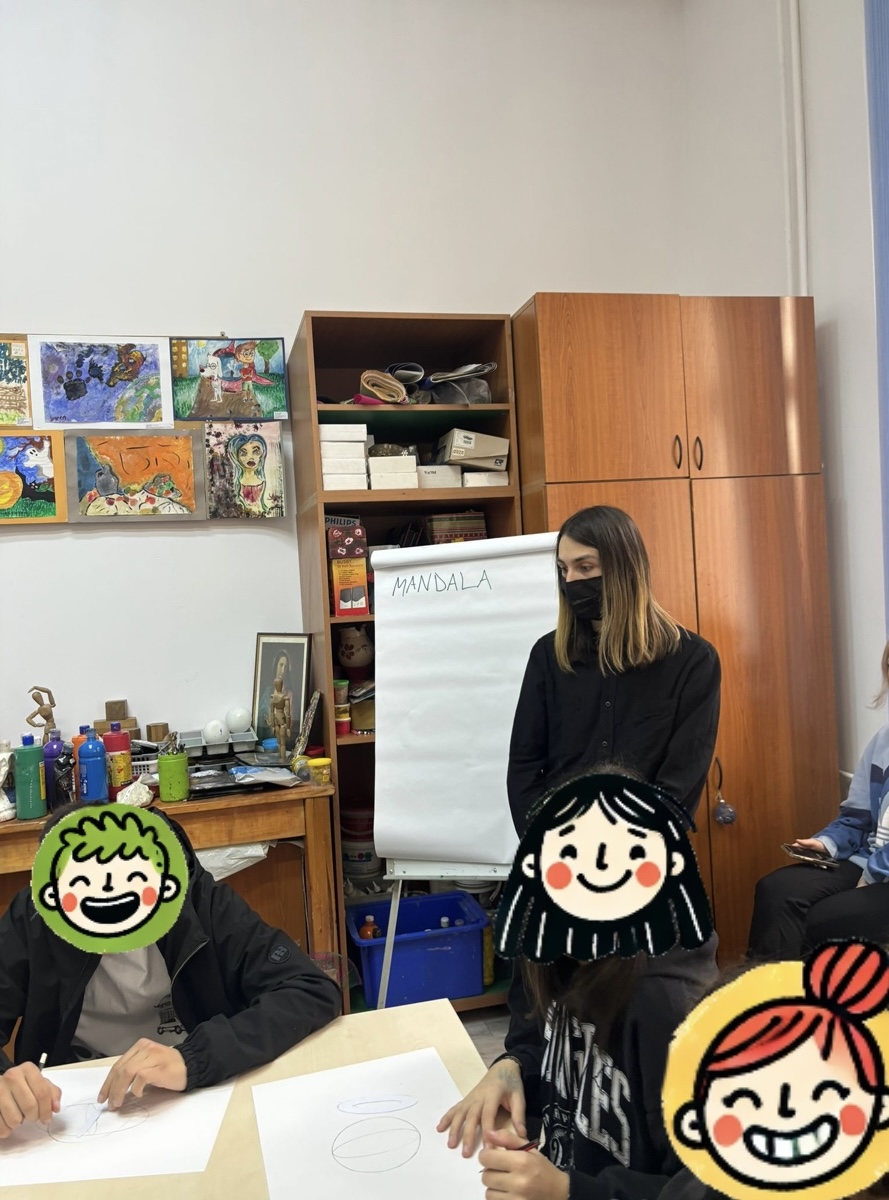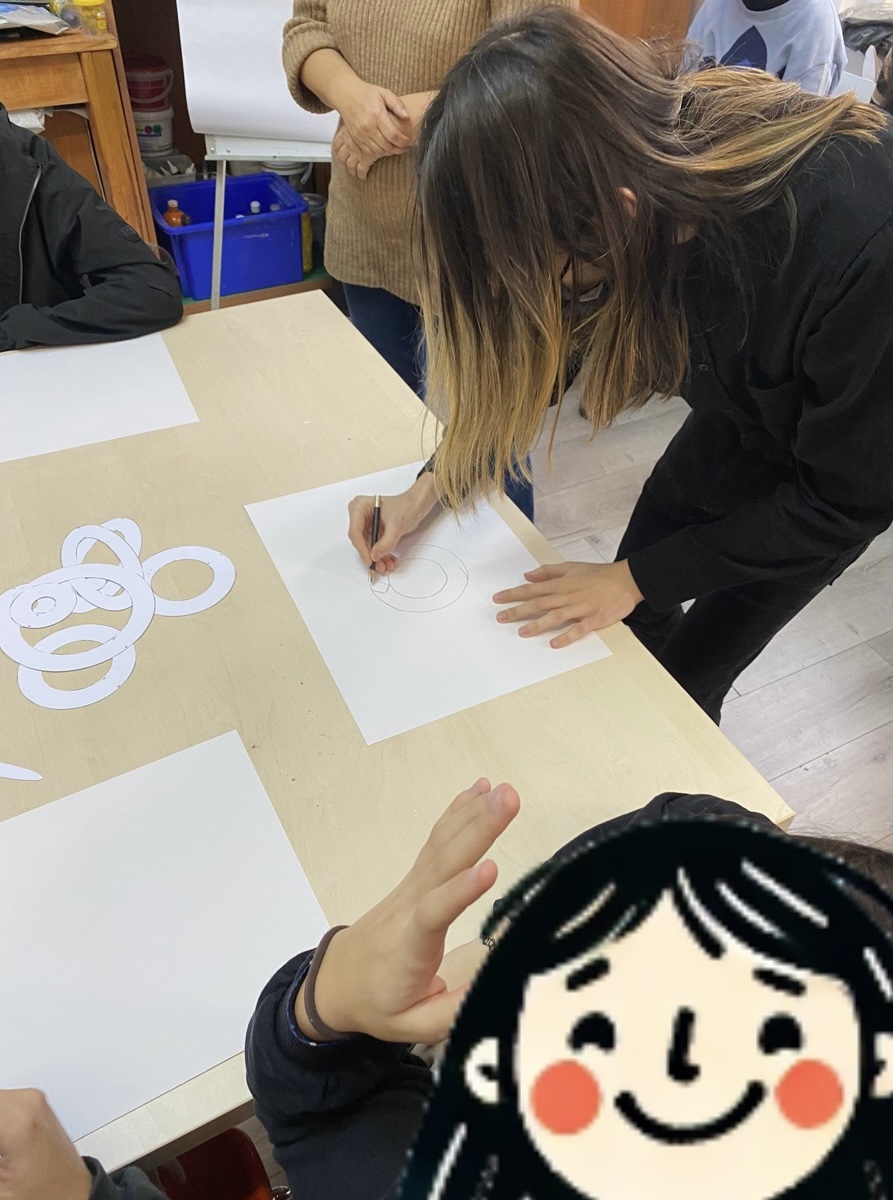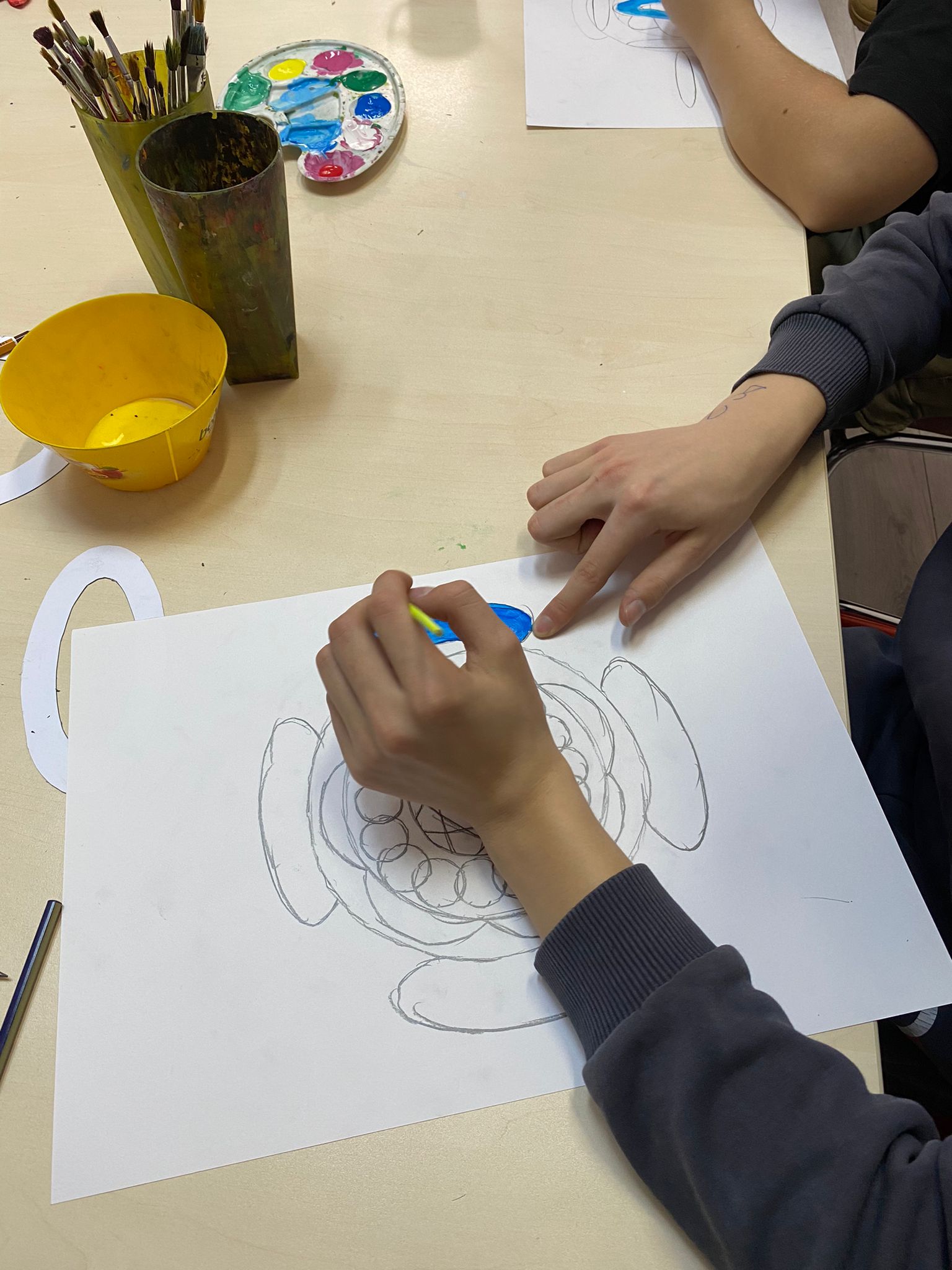Context
This teaching activity was developed as part of the Art Education Practice at my university. The practice took place at the Special Technological High School for the Hearing Impaired in Cluj-Napoca, a public local school for children with hearing impairments.
I was assigned to teach classes ranging from the 5th to the 8th grade and was responsible for four different art lessons, one of which I will present here.
A key challenge was that the children used sign language, with some being completely deaf and mute. My professor assisted me in bridging the communication gap, and by the time of my final lesson, I had learned a few signs.
I was assigned to teach classes ranging from the 5th to the 8th grade and was responsible for four different art lessons, one of which I will present here.
A key challenge was that the children used sign language, with some being completely deaf and mute. My professor assisted me in bridging the communication gap, and by the time of my final lesson, I had learned a few signs.
Lesson
The lecture I would like to detail is my first and, in fact, my favorite. I aimed to teach progressively higher classes, so I began with the 5th grade. My teacher-mentor selected an art lesson from the Romanian national curriculum titled "Splatters."
In visual art, there are three fundamental elements: the point, the line, and the spot. In this lesson, I focused on teaching about the spot.
By considering the various sizes and colors that a spot can take, layering multiple small spots can create the illusion of a night sky filled with stars. Therefore, we agreed to use the Universe as the theme for the activity. With this main objective in mind, I developed a teaching plan that adheres to the Romanian national standards.
To explain my work process, I will begin with general information about the class, followed by a step-by-step explanation of the practical activities conducted.
In visual art, there are three fundamental elements: the point, the line, and the spot. In this lesson, I focused on teaching about the spot.
By considering the various sizes and colors that a spot can take, layering multiple small spots can create the illusion of a night sky filled with stars. Therefore, we agreed to use the Universe as the theme for the activity. With this main objective in mind, I developed a teaching plan that adheres to the Romanian national standards.
To explain my work process, I will begin with general information about the class, followed by a step-by-step explanation of the practical activities conducted.
General Information
Date: November 8, 2024
Grade: 5th
Educational Institution: Special Technological High School for the Hearing Impaired, Cluj-Napoca
Teacher: Oltean Irinel-Lucia
Subject: Visual Education
Curricular Area: Arts
Unit Of Study: Elements of Visual Language
Art Theme: The Painterly Splatter
Applied Topic: The Universe
Type Of Lesson: Review and Reinforcement
Time Allotted For The Lesson: 50 minutes
Location: The School Workshop
Lesson Goal: To reinforce knowledge about the painterly splatter and discover various ways of creating blot effects
General Competencies:
2. The use of various tools and techniques specific to the visual arts
Specific Competencies:
2.1. The appropriate use of different tools, materials, and techniques specific to the visual arts
2.2. Exploring the expressive range of visual language using specific techniques
Didactic Strategy:
a.Methods and procedures: didactic explanation, didactic conversation, demonstration
b.Teaching Aids / Bibliography:
PDF presentation, laptop, cardboard, balloons, straws, string, tempera paint, cups, brushes, stencils
c.Form of activity: whole-class, team work
d.Forms and assessment techniques: individual and collective evaluations, peer assessment, exhibition
Performance Descriptors (Student Requirements):
a.Good:
-demonstrates moderate attention to the explanations offered by the teacher, but does not participate actively and does not answer the teacher’s questions;
-incompletely covers surfaces while trying to complete the assignment;
-shows passivity during the evaluation phase.
b.Great
-demonstrates moderate attention to the explanations offered by the teacher but does not actively participate and does not answer the teacher’s questions;
-uses various methods to create the blot (keeping the artistic theme in mind);
-shows passivity during the evaluation phase.
c.Excellent:
-engages in a conversation with the teacher, answers the teacher’s questions and challenges;
-completes the work fully and correctly (uses various methods to create the blot, takes into account the artistic theme, and finishes the piece harmoniously);
-is actively involved in the evaluation phase
Grade: 5th
Educational Institution: Special Technological High School for the Hearing Impaired, Cluj-Napoca
Teacher: Oltean Irinel-Lucia
Subject: Visual Education
Curricular Area: Arts
Unit Of Study: Elements of Visual Language
Art Theme: The Painterly Splatter
Applied Topic: The Universe
Type Of Lesson: Review and Reinforcement
Time Allotted For The Lesson: 50 minutes
Location: The School Workshop
Lesson Goal: To reinforce knowledge about the painterly splatter and discover various ways of creating blot effects
General Competencies:
2. The use of various tools and techniques specific to the visual arts
Specific Competencies:
2.1. The appropriate use of different tools, materials, and techniques specific to the visual arts
2.2. Exploring the expressive range of visual language using specific techniques
Didactic Strategy:
a.Methods and procedures: didactic explanation, didactic conversation, demonstration
b.Teaching Aids / Bibliography:
PDF presentation, laptop, cardboard, balloons, straws, string, tempera paint, cups, brushes, stencils
c.Form of activity: whole-class, team work
d.Forms and assessment techniques: individual and collective evaluations, peer assessment, exhibition
Performance Descriptors (Student Requirements):
a.Good:
-demonstrates moderate attention to the explanations offered by the teacher, but does not participate actively and does not answer the teacher’s questions;
-incompletely covers surfaces while trying to complete the assignment;
-shows passivity during the evaluation phase.
b.Great
-demonstrates moderate attention to the explanations offered by the teacher but does not actively participate and does not answer the teacher’s questions;
-uses various methods to create the blot (keeping the artistic theme in mind);
-shows passivity during the evaluation phase.
c.Excellent:
-engages in a conversation with the teacher, answers the teacher’s questions and challenges;
-completes the work fully and correctly (uses various methods to create the blot, takes into account the artistic theme, and finishes the piece harmoniously);
-is actively involved in the evaluation phase
1. Preparation
I needed to ensure that the activity was both enjoyable for the children and educational, allowing them to learn new techniques for creating splatters. They were already familiar with using brushes to create color blots by tapping them and knew how to drop large paint drops and alter their direction by tilting the paper. To introduce something new, I considered providing them with straws to blow the paint drops.
I searched for inspirational ideas to better understand what "Universe in Splatters" could entail and noticed that many artworks featured moons and large stars. I believed these elements could serve as focal points for larger compositions. However, since this was a splatter class rather than a drawing class, the children needed to incorporate these elements without drawing them.
As mentioned throughout my portfolio, I enjoy creating connections between my ideas and skills to develop creative concepts. Reflecting on the techniques I had learned at university, I recalled that we had studied the use of stencils and spray paint. This inspired me to create stencil templates of stars and moons that the children could use by splattering around the negative forms.
I printed two templates on A4 paper with a weight of 300 g/m² to ensure they were strong enough to resist water. I cut the templates using an utility knife, and when I was ready to discard the positive forms, I realized they could also be used.
My professor suggested that I could also use balloons, as inflated balloons are excellent for stamping large spots. Additionally, we had string and sponges available, which can create nice marks on the paper. I also prepared a PDF presentation to be projected on the classroom TV.
In summary, I prepared the following materials for the activity: tempera paint (since it is washable with water), the star and moon templates, straws, balloons, string, and sponges.
I searched for inspirational ideas to better understand what "Universe in Splatters" could entail and noticed that many artworks featured moons and large stars. I believed these elements could serve as focal points for larger compositions. However, since this was a splatter class rather than a drawing class, the children needed to incorporate these elements without drawing them.
As mentioned throughout my portfolio, I enjoy creating connections between my ideas and skills to develop creative concepts. Reflecting on the techniques I had learned at university, I recalled that we had studied the use of stencils and spray paint. This inspired me to create stencil templates of stars and moons that the children could use by splattering around the negative forms.
I printed two templates on A4 paper with a weight of 300 g/m² to ensure they were strong enough to resist water. I cut the templates using an utility knife, and when I was ready to discard the positive forms, I realized they could also be used.
My professor suggested that I could also use balloons, as inflated balloons are excellent for stamping large spots. Additionally, we had string and sponges available, which can create nice marks on the paper. I also prepared a PDF presentation to be projected on the classroom TV.
In summary, I prepared the following materials for the activity: tempera paint (since it is washable with water), the star and moon templates, straws, balloons, string, and sponges.
2. Organization
When the children arrived at the workshop, my mentor introduced me to them and assisted throughout the entire lesson. They were informed that I would be their teacher for this session. The class consisted of seven children.
I asked one child to help me by providing cups of water and brushes for the others while I prepared the PDF materials. I then instructed them to split into two teams, each with one large piece of cardboard as their canvas.
I asked one child to help me by providing cups of water and brushes for the others while I prepared the PDF materials. I then instructed them to split into two teams, each with one large piece of cardboard as their canvas.
3.Review of Acquired Knowledge
This was the moment when the actual class began. It is important to assess what the pupils still know from their previous lessons. This provides a great opportunity to interact with them and guide them in a way that encourages them to provide answers. Conducting a review in this manner transforms them into active participants, increasing the likelihood that they will retain the information for a longer period of time.
I asked them how they could create splatters on the paper. Many responded that they could use their brushes or blow over the paint. These were excellent answers, and I praised them for their contributions.
I asked them how they could create splatters on the paper. Many responded that they could use their brushes or blow over the paint. These were excellent answers, and I praised them for their contributions.
4.Teaching the New Content
Using the PDF material, I presented various techniques for creating paint blobs. At the beginning, I encouraged the pupils to guess the method depicted in each image, and they successfully identified each technique.
I showed them paintings created by dropping paint onto wet paper, allowing the colors to spread more than they would on a dry surface.
Additionally, they observed the effects of dragging a string dipped in paint across the paper.
This interactive approach helped the students understand different splattering methods and sparked their creativity for the upcoming activity.
I showed them paintings created by dropping paint onto wet paper, allowing the colors to spread more than they would on a dry surface.
Additionally, they observed the effects of dragging a string dipped in paint across the paper.
This interactive approach helped the students understand different splattering methods and sparked their creativity for the upcoming activity.
5.Guiding the Learning
Besides showcasing the results of different techniques, I also conducted live demonstrations. I grabbed a piece of paper, a sponge, and some paint to show them how to use the templates to create stars. Additionally, I demonstrated how to use string for painting.
Before long, the children were very excited to start working and began immediately. I didn't even have the chance to show them how to use the balloons, but they intuitively started dabbing them in paint.
I continued to guide them when they felt unsure. For example, one team had covered their canvas in dark colors and didn't know how to proceed. I suggested using yellow and white to create small point-stars. This feedback was well received and encouraged them to use brighter colors.
Before long, the children were very excited to start working and began immediately. I didn't even have the chance to show them how to use the balloons, but they intuitively started dabbing them in paint.
I continued to guide them when they felt unsure. For example, one team had covered their canvas in dark colors and didn't know how to proceed. I suggested using yellow and white to create small point-stars. This feedback was well received and encouraged them to use brighter colors.
6.Ensuring Retention and Transfer
At the end of the session, I invited the pupils to recap the day's activities. I asked them what they had learned and why. Their responses were enthusiastic, with one student saying, "We learned how to paint the Universe."
I also encouraged them to observe the other team's work and identify the elements they could find, fostering a feedback exchange between the teams.
I also encouraged them to observe the other team's work and identify the elements they could find, fostering a feedback exchange between the teams.
7.Feedback
A common and constructive method of feedback suitable for this type of activity is to have the groups provide feedback to one another. This approach familiarizes the pupils with peer review. They were very supportive and highlighted their favorite aspects of each other's work.
8.Cleaning
Understandably, this activity led to a significant amount of paint being spilled across the floor and tables. However, it was important to teach the children the responsibility of cleaning their own spaces after completing their work. Consequently, we all took part in the cleanup process. Some children helped by washing the cups, others wiped down the tables, and I organized the art supplies. This collaborative effort not only maintained a clean environment but also instilled a sense of responsibility and teamwork among the pupils.
Conclusion
My mentor was very satisfied with my performance, as I successfully organized the materials, structured the lesson, and interacted effectively with the pupils.
This was my favorite lesson because there was a girl who attended art classes in her free time and demonstrated a great deal of creativity. She was constantly laughing and having a wonderful time, acting as the de facto leader of her group by coordinating others and giving directions. I was pleasantly surprised to witness such remarkable talent. Additionally, all the other children were very energetic and enthusiastic about painting.
This was my favorite lesson because there was a girl who attended art classes in her free time and demonstrated a great deal of creativity. She was constantly laughing and having a wonderful time, acting as the de facto leader of her group by coordinating others and giving directions. I was pleasantly surprised to witness such remarkable talent. Additionally, all the other children were very energetic and enthusiastic about painting.
Other Lessons Taught By Me
You can view some pictures from other lessons I taught, where the thinking and working process was similar to the one detailed above.

